smart meter
description: type of utility meter that uses advanced technology
82 results
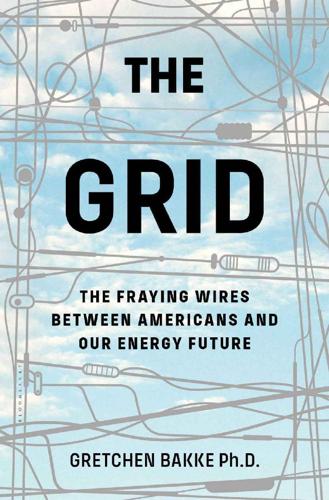
The Grid: The Fraying Wires Between Americans and Our Energy Future
by
Gretchen Bakke
Published 25 Jul 2016
like a cash grab: Jack Danahy, “Smart Grid Fallout: Lessons to Learn from PG&E’s Smart Meter Lawsuit,” Smart Grid News, November 13, 2009, http://www.smartgridnews.com/story/smart-grid-fallout-lessons-learn-pge-s-smart-meter-lawsuit/2009-11-13, for individual customer complaints see: https://sites.google.com/site/nocelltowerinourneighborhood/home/wireless-smart-meter-concerns/smart-meter-consumers-anger-grows-over-higher-utility-bills. digital smart meters: Jesse Wray-McCann, “Householders Shielding Homes from Smart Meter Radiation,” Herald Sun, April 9, 2012, http://www.heraldsun.com.au/ipad/householders-shielding-homes-from-smart-meter-radiation/story-fn6bfm6w-1226321653862.
…
CHAPTER 6: Two Birds, One Stone station after the event: Charlie Wells, “Houston Woman Thelma Taormina Pulls Gun on Electric Company Worker for Trying to Install ‘Smart Meter,’ ” New York Daily News, July 19, 2012, http://www.nydailynews.com/news/national/houston-woman-thelma-taormina-pulls-gun-electric-company-worker-install-smart-meter-article-1.1118051. which were watching Shrek 2: “Researchers Claim Smart Meters Can Reveal TV Viewing Habits,” Metering.com, September 21, 2011, http://www.metering.com/researchers-claim-smart-meters-can-reveal-tv-viewing-habits/. For the research conducted at the University of Washington, see Antonio Regalado, “Rage Against the Smart Meter,” MIT Technology Review, April 26, 2012, http://www.technologyreview.com/news/427497/rage-against-the-smart-meter/.
…
The question remains the same in Boulder as in Bakersfield and Houston and Maine (with residents’ worries about the well-being of their ball-shaped organs): If smart meters or even a whole smart grid can’t be proved to benefit customers even by the very utility undertaking the upgrade, whom, then, do they benefit? Why did Xcel go to the trouble and expense of building a citywide smart grid? Why did CenterPoint visit the Taorminas seven times in attempting to give them a smart meter? Why did PG&E risk a class-action lawsuit to ensure that all the people of Bakersfield also got their new meters? The answer, of course, is that smart meters don’t benefit us, the customers. At least they don’t directly. Smart meters, and to a lesser extent other grid-smartening investments, benefit them, the utility companies.
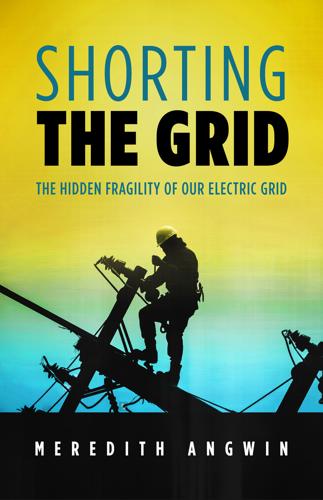
Shorting the Grid: The Hidden Fragility of Our Electric Grid
by
Meredith. Angwin
Published 18 Oct 2020
As a strong supporter of personal privacy, I myself have some issues with smart meters. My concerns are not overwhelming. I have a smart meter in my home, though I easily could opt out. However, I do not consider my concerns to be trivial, either. In Vermont, since smart meters save money for the utility, there were proposals that you should pay if you opt out of having a smart meter in your home. Without a smart meter in your home, utility costs for servicing your home will go up, and the idea is that it is unfair to make other customers pay such costs. Paying a fee to opt out of having a smart meter was first implemented in Maine.251 However, the Vermont legislature passed a bill allowing Vermont utility customers to opt out of smart-meter installation for free.252 Very few people actually opt out of having a smart meter.
…
pageNumber=2&virtualBrandChannel=0. 248 “When you use electricity can make a difference in how much it costs (webpage),” Alliant Energy, undated, https://www.alliantenergy.com/WaysToSave/SavingsTipsandPrograms/TimeofDayPricingIOWARES. 249 Gretchen Bakke, The Grid: The Fraying Wires Between Americans and Our Energy Future, Bloomsbury Publishing Plc, 2016. 250 Stoltz, “‘Smart’ electric meters.” 251 Katherine Tweed, “Even With WiFi Interference, Meter Opt Out Not Popular,” gtm: (website of Greentech Media), November 23, 2011, https://www.greentechmedia.com/articles/read/even-with-wi-fi-interference-meter-opt-out-not-popular#gs.3l0aq5. 252 Katherine Tweed, “No Smart Meter, No Cost in Vermont,” gtm: (website of Greentech Media), May 15, 2012, https://www.greentechmedia.com/articles/read/no-smart-meter-no-cost-in-vermont#gs.3l0rjs%5C. 253 Tom Evslin, “Don’t like smart meters? Opt out at your own expense,” VTDigger, September 28, 2011, https://vtdigger.org/2011/09/28/evslin-don’t-like-smart-meters-opt-out-at-your-own-expense/. 254 Robert Walton, “Smart meter readings are a valid ‘warrantless search,’ court rules,” Utility Dive, August 21, 2018, https://www.utilitydive.com/news/smart-meter-readings-are-a-valid-warrantless-search-court-rules/530507/. 255 Peter Cappers, Annika Todd, and Greg Leventis, “Uses for Smart Meter Data Webinar Series,” Electricity Markets & Policy Group (at Berkeley Lab), November 2018, https://emp.lbl.gov/publications/uses-smart-meter-data-webinar-series. 256 Jeff St.
…
According to a recent article on smart meters for New Jersey,250 PG&E eventually admitted that the meters they had installed in Bakersfield malfunctioned when they got too warm. In other words, PG&E’s claim was incorrect. The large increase in Bakersfield electricity bills was not because the people of Bakersfield did know how to work with their smart meters. The increase was due to PG&E’s malfunctioning smart meters. This type of incident does not make installing smart meters acceptable to the ratepayers. This entire series of events is sometimes called “The Bakersfield Effect.” Smart meters THE BAKERSFIELD EFFECT WAS more about utility arrogance than about smart meters or time-of-day pricing.

The Non-Tinfoil Guide to EMFs
by
Nicolas Pineault
Published 6 Dec 2017
Electricity Costs Utility companies tell everyone that installing a smart meter will reduce your electricity costs,486 but a lot of people have in fact experienced a sharp rise in their monthly electricity bill.487 Some smart meters are a real fire hazard and are thought to have caused hundreds if not thousands of fires in North America alone.488 Fire Hazard Dirty Electricity Smart meters create a ton of dirty electricity in your house,489 and a lot of people have reported getting sick since their installation.490 RF Radiation Smart meters emit a strong RF signal 24/7 — which is the main issue I’ll talk about… right now.
…
Here’s what to look for. Smart Meters Around two years ago, I watched a documentary produced by Josh Del Sol called “Take Back Your Power”483 — which explains exactly why switching your old analog electricity and gas meters for the wireless “smart” ones is a really bad idea. There are a lot of issues around these meters, and most of them are way beyond the scope of this guide that was supposed to be relatively short but that I realize is getting pretty beefy after all. The short version: Everything That’s Wrong With Smart Meters Privacy Civil rights Cybersecurity 483 484 Smart meters gather information from all your smart appliances, and transmits this information — how frequently you open the fridge, what’s plugged into your walls outlets, etc. — to the utility company.
…
When your home is connected to a smart meter, the utility company can shut down your power usage for any reason, at any time. Creating a “smart grid” where every household’s electricity use is monitored online means that it can be hacked into. A lot of people way smarter than me when it comes to cybersecurity — including a former CIA director484 — have said this is a really, really bad idea. I highly suggest renting it for $4 on the official website: takebackyourpower.net/ youtube.com © 2017 N&G Media Inc. 180 Everything That’s Wrong With Smart Meters Environment Smart meters need to be replaced every 5 to 7 years, compared to every 20 to 30 years for analog meters485 — and you’re the one paying the bill.
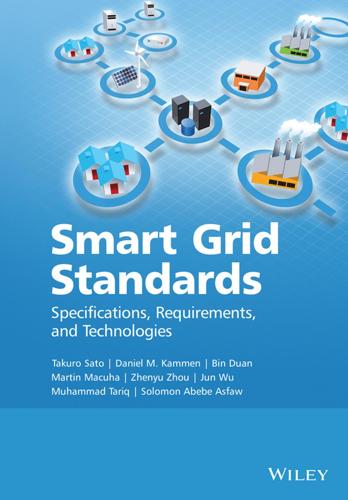
Smart Grid Standards
by
Takuro Sato
Published 17 Nov 2015
Section 5.3.2.2 describes the metering standardization projects and efforts initiated by various organizations and groups. 5.3.1 The AMI System The AMI system is made up of the smart meter, communication module, Data Concentrator (DC), and Meter Data Management System (MDMS). The AMI system diagram is shown in Figure 5.2. At the consumer level, the energy consumption data are communicated to both the user and the utility by smart meters. Smart meters have the ability to transmit the collected data through different media. The meter data are received by the DC and sent to the MDMS. MDMS manages data storage and analyzes the consumption data to provide the information in useful form to the service provider.
…
IEC 61107 is a half-duplex protocol Smart Grid Standards 190 Table 5.1 Standard list of advanced metering infrastructure (AMI) Function field Standard name Short introduction Product Product Product IEC 62051 IEC 62052-11, 62052-21, 62052-31 IEC 62053 series Product IEC 62054-11, 62054-21 Product Product Transmission Transmission IEC 62058-11, 62058-21, 62058-31 IEC 61968-9 IEC 61334 EN 13757 Transmission PRIME Transmission ITU G3-PLC Transmission HomePlug Netricity PLC Transmission Transmission AMI AMI IEEE 802.15.4 IEEE 802.11 UtilityAMI high level requirements OPEN meter deliverables Electricity metering – glossary of terms General requirements, test and test conditions for electricity metering equipment (AC) Particular test requirements and test methods for electricity metering equipment Tariff and load control requirements for electricity metering Acceptance inspection requirements for electricity metering equipment Interfaces for meter reading and control Metering automation using narrowband PLC Communication systems for remote reading of meters based on M-bus Iberdrola specs-based PLC modem standard for smart meters ERDF specs-based PLC modem communication standard for smart meters HomePlug PLC standards targeting smart meter to grid applications Wireless WPANs PHY and MAC specification Wireless LAN PHY and MAC specification High-level requirements for AMI Payment Reliability IEC 62055 series IEC 62059 Data exchange IEC 62056 series Data exchange ANSI C12 series Data exchange Data exchange EN 1434-3 AEIC Guideline V2.0 Data exchange Security NEMA SG-AMI AMI-SEC (security) AMI system security requirement A comprehensive set of open and public standards for AMI Payment systems for electricity metering Dependability prediction and assessment methods for electricity metering equipment Data exchange for meter reading, tariff, and load control Standard suite of data formats, data structures, and communication protocols specified by ANSI for smart meters Data exchange and interfaces for heat meters Guideline for vendors and utilities desiring to implement ANSI C12 standards Requirements for smart meter upgradability Security requirements developed by the AMI-SEC Task Force for AMI ERDF, Électricite Réseau Distribution France and LAN, local area network.
…
IEC 61107 is a half-duplex protocol Smart Grid Standards 190 Table 5.1 Standard list of advanced metering infrastructure (AMI) Function field Standard name Short introduction Product Product Product IEC 62051 IEC 62052-11, 62052-21, 62052-31 IEC 62053 series Product IEC 62054-11, 62054-21 Product Product Transmission Transmission IEC 62058-11, 62058-21, 62058-31 IEC 61968-9 IEC 61334 EN 13757 Transmission PRIME Transmission ITU G3-PLC Transmission HomePlug Netricity PLC Transmission Transmission AMI AMI IEEE 802.15.4 IEEE 802.11 UtilityAMI high level requirements OPEN meter deliverables Electricity metering – glossary of terms General requirements, test and test conditions for electricity metering equipment (AC) Particular test requirements and test methods for electricity metering equipment Tariff and load control requirements for electricity metering Acceptance inspection requirements for electricity metering equipment Interfaces for meter reading and control Metering automation using narrowband PLC Communication systems for remote reading of meters based on M-bus Iberdrola specs-based PLC modem standard for smart meters ERDF specs-based PLC modem communication standard for smart meters HomePlug PLC standards targeting smart meter to grid applications Wireless WPANs PHY and MAC specification Wireless LAN PHY and MAC specification High-level requirements for AMI Payment Reliability IEC 62055 series IEC 62059 Data exchange IEC 62056 series Data exchange ANSI C12 series Data exchange Data exchange EN 1434-3 AEIC Guideline V2.0 Data exchange Security NEMA SG-AMI AMI-SEC (security) AMI system security requirement A comprehensive set of open and public standards for AMI Payment systems for electricity metering Dependability prediction and assessment methods for electricity metering equipment Data exchange for meter reading, tariff, and load control Standard suite of data formats, data structures, and communication protocols specified by ANSI for smart meters Data exchange and interfaces for heat meters Guideline for vendors and utilities desiring to implement ANSI C12 standards Requirements for smart meter upgradability Security requirements developed by the AMI-SEC Task Force for AMI ERDF, Électricite Réseau Distribution France and LAN, local area network. Smart Energy Consumption 191 Fire Alarm TV Data Concentrator Meter Data Management System (MDMS) Communication Module Communication Module Smart Meter (Gas, Water, Eelctricity) AMI System Energy Management System (EMS) Air Conditioner Water Heater Washing Machine Washer & Dryer Robot Vacuum Smart Home & Building Automation System Utility System (Service Provider) Figure 5.2 AMI system diagram that sends ASCII data using a serial port such as a twisted pair EIA-485 or an optical port.

Future Crimes: Everything Is Connected, Everyone Is Vulnerable and What We Can Do About It
by
Marc Goodman
Published 24 Feb 2015
Smith, “Hacking and Attacking Automated Homes,” Network World, June 25, 2013. 50 Hilton Hotels too: Nancy Trejos, “Hilton Lets Guests Pick Rooms, Use Smartphones as Keys,” USA Today, July 29, 2014. 51 Worldwide nearly ninety million: Michael Wolf, “3 Reasons 87 Million Smart TVs Will Be Sold in 2013,” Forbes, Feb. 25, 2013. 52 Many brands have been found: Lorenzo Franceschi-Bicchierai, “Your Smart TV Could Be Hacked to Spy on You,” Mashable, Aug. 2, 2013; Dan Goodin, “How an Internet-Connected Samsung TV Can Spill Your Deepest Secrets,” Ars Technica, Dec. 12, 2012. 53 “750,000 malicious spam”: Ellie Zolfagharifard, “Criminals Use a Fridge to Send Malicious Emails in First Ever Home Hack,” Mail Online, Jan. 17, 2014. 54 Refrigerator spam: “Spam in the Fridge,” Economist, Jan. 25, 2014. 55 In early 2014, researchers: Dan Goodin, “ ‘Internet of Things’ Is the New Windows XP—Malware’s Favorite Target,” Ars Technica, April 2, 2014. 56 As of mid-2013: Utility-Scale Smart Meter Deployments, IEE report, Aug. 2013, 3; Chris Choi, “Smart Meters Are Heading to Every Home in Britain,” ITV News, July 8, 2014. 57 Researchers in Germany: Jordan Robertson, “Your Outlet Knows: How Smart Meters Can Reveal Behavior at Home, What We Watch on TV,” Bloomberg, June 10, 2014. 58 According to an investigation: Brian Krebs, “FBI: Smart Meter Hacks Likely to Spread,” Krebs on Security, April 9, 2012. 59 Like all computers: Katie Fehrenbacher, “Smart Meter Worm Could Spread like a Virus,” Gigaom, July 31, 2009. 60 Nest’s thermostats: Rolfe Winkler, “What Google Gains from Nest Labs,” Wall Street Journal, Jan. 15, 2014. 61 “conscious home”: Marcus Wohlsen, “What Google Really Gets out of Buying Nest for $3.2 Billion,” Wired, Jan. 14, 2014. 62 Google’s Nest thermostat: Richard Lawler, “Nest Learning Thermostat Has Its Security Cracked Open by GTVHacker,” Engadget, June 23, 2014. 63 Nest’s other main product: Edward C.
…
In doing so, hackers can keep your appliances running at full speed, generating virtual currencies for them while sticking you with the electric bill for spinning your devices 24/7. In theory, the new smart meter in your home might catch the excessive electricity use, but of course it too can be hacked. What the Outlet Knows Smart meters will be at the core of the global IoT, and their two-way communications abilities will record and track details of electricity usage in homes and businesses in order to increase the overall efficiency and reliability of an outdated and overburdened electrical grid. As of mid-2013, smart meters had been installed in over forty-six million homes in the United States, and the U.K. anticipates their deployment throughout all of Britain by 2020.
…
As of mid-2013, smart meters had been installed in over forty-six million homes in the United States, and the U.K. anticipates their deployment throughout all of Britain by 2020. Smart-meter information, much of which is transmitted in an unencrypted format, can actually reveal details such as the brand and age of your appliances and when you are using them in which rooms of your home. Extrapolating such data reveals how much time you spend cooking and when you turn on the TV in the bedroom. But the deep granularity smart meters can provide on your activities extends far beyond simply knowing you used the microwave at 7:26 p.m. on Thursday. Researchers in Germany revealed that smart meters could also tell what television programs people were watching at what times, because of the specific electricity required in order to display the scenes of each show on your screen.

Smart Cities: Big Data, Civic Hackers, and the Quest for a New Utopia
by
Anthony M. Townsend
Published 29 Sep 2013
John on the GigaOM blog, it’s “one of the few corporations out there that can lay claim to almost every share of the world’s current grid infrastructure, building everything from gas and wind turbines to high-voltage transmission cables to sensors and controls that monitor and manage the delivery of power to homes and businesses.”45 Targeting nearly $8.5 billion (€6 billion) in annual smart grid business by 2014, CEO Peter Löscher boasted, “We’re on the threshold of a new electric age.”46 As consumers, we think of the smart grid mostly through our growing experience with smart meters. Smart meters are to your old electric meter what a smartphone is to your grandmother’s Bakelite 1950s rotary phone. It’s a souped-up, networked upgrade that constantly reports back to the electric company a stream of data about your power consumption, including when it detects blackouts and brownouts. The more advanced models can manage power-hungry appliances in your home. In-Stat, a market research firm, projects that by 2016 fully three-quarters of American electric meters will have been converted to smart meters.47 While these are the most visible endpoints of the emerging new grid, Siemens actually sold off its smart-meter business a decade ago.
…
Load shifting, the gentler of the two, tries to spread demand for power away from peak periods of demand through price incentives. In their simplest form, smart meters allow businesses and consumers to see the true cost of generating electricity during periods of high demand. As they fire up those costly peaking plants, utilities simply pass the higher generating cost along to consumers. Dynamic pricing can dramatically reduce swings in demand for power and increase overall generating efficiency, but load shifting can also be automated and proactive. Smart meters that communicate directly with smart appliances might automatically reschedule a load of wash for later in the day when demand and prices are likely to fall.
…
John, “How Siemens is Tackling the Smart Grid,” GigaOM, last modified June 24, 2010, http://gigaom.com/cleantech/how-siemens-is-tackling-the-smart-grid/. 46“Siemens CEO Peter Löscher: We’re on the threshold of a new electric age,” Siemens press release, December 15, 2010, http://www.siemens.com/press/en/pressrelease/?press=/en/pressrelease/2010/corporate_communication/axx20101227.htm. 47“75% of US Electric Meters to be Smart Meters by 2016,” In-Stat press release, March 5, 2012, http://www.fiercetelecom.com/press-releases/75-us-electric-meters-will-be-smart-meters-2016. 48Chris Nelder, “Why baseload power is doomed,” SmartPlanet, blog, last modified March 28, 2012, http://www.smartplanet.com/blog/energy-futurist/why-baseload-power-is-doomed/445. 49Massoud Amin, “North American Electricity Infrastructure: System Security, Quality, Reliability, Availability, and Efficiency Challenges and their Societal Impacts,” in Continuing Crises in National Transmission Infrastructure: Impacts and Options for Modernization, National Science Foundation (NSF), June 2004. 50Fitze, “No Longer A One-Way Street,” 23. 51Tim Schröder, “Automation’s Ground Floor Opportunity,” Pictures of the Future, Spring 2011, 19, http://www.siemens.com/innovation/apps/pof_microsite/_pof-spring-2011/_pdf/pof_0111_strom_buildings_en.pdf. 52Eric Paulos, lecture, “Forum on Future Cities,” MIT SENSEable City Lab and the Rockefeller Foundation, Cambridge, MA, April 13, 2011, http://techtv.mit.edu/collections/senseable/videos/12305-changing-research; For a thorough treatment see Eric Paulos and James Pierce, “Citizen Energy: Towards Populist Interactive Micro-Energy Production,” n.d., http://www.paulos.net/papers/2011/Citizen_Energy_HICSS2011.pdf. 53James R.

Reality Is Broken: Why Games Make Us Better and How They Can Change the World
by
Jane McGonigal
Published 20 Jan 2011
It’s creating two different kinds of equally important social participation tasks, for people with smart meters and people without smart meters. First, and most obviously, players with smart meters can tackle the social participation task of reducing their energy consumption. This is the core “do-good” mission of the game. But there’s also the SPT of lavishing our attention on each other’s good acts. People who don’t have access to smart meters yet can still play the game, by making wagers on players who do have smart meters. And this is a real contribution to the common good, since it creates social rewards for the energy savers.
…
The more energy bets you win, the more powerful and rich your Lost Joules avatar will become. The game works with smart meters, home electricity meters that are connected to the Internet. Smart meters allow you to monitor and analyze how and where your energy is being consumed—they can even calculate exactly how much each appliance in your house is costing you. Studies have shown that having this kind of feedback makes it much easier to reduce energy consumption: on average, a smart meter user will be able to decrease his or her consumption permanently by 10 percent.15 And that’s without friends, family, and strangers cheering you on, or trying to beat your best effort.
…
Studies have shown that having this kind of feedback makes it much easier to reduce energy consumption: on average, a smart meter user will be able to decrease his or her consumption permanently by 10 percent.15 And that’s without friends, family, and strangers cheering you on, or trying to beat your best effort. Can you imagine how much more energy could be saved if using smart meters was turned into a good game? Lost Joules is set to find out. The application collects personal smart-meter data from players and challenges them to achieve concrete, energy-saving missions. Then it makes that data public to other players—who will place bets on your ability to achieve energy-saving missions. If they think you can do it, they’ll bet with you—and if they doubt you, they’ll invest in someone else. The players who achieve the most missions regularly will become superstars in the Lost Joules world, generating returns not only for themselves, but also for everyone who cheers them on.
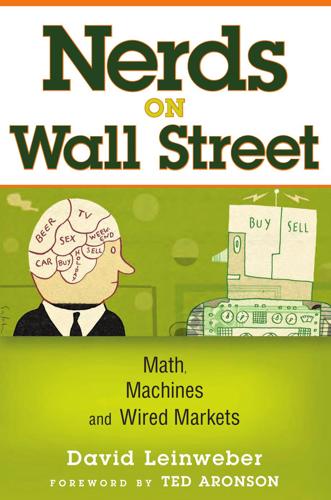
Nerds on Wall Street: Math, Machines and Wired Markets
by
David J. Leinweber
Published 31 Dec 2008
(Notice that “Innovative” appears twice in the figure, indicative of the rapid pace of change, and note the foundation level position for smart end-use devices.) These so-called smart meters are the enabling technology for intelligent engineering and market solutions to electric energy problems. Recall that electronic market access (first seen in the NYSE’s DOT) was the enabling technology for disintermediation, and later, the use of information technology for algorithmic trading. Similarly, these smart meters will allow utilities, small producers, and consumers to bring the benefits of ubiquitous computation and market solutions to creating a more efficient, less polluting, low-carbon electric industry. These smart meters exist now. GridPoint in Arlington, Virginia, is the lead dog firm in this space.
…
For consumers, the platform provides protection from power outages, increases energy efficiency through online energy management, and integrates renewable energy, paving the way for the commercial success of solar and wind energy sources. The initial application for smart meters was simple: remote meter reading. This was the motivation for the utility vendors to install them to the limited extent that this has been done. But with greater capabilities in the newer versions the smart meters enable a much greater and more sophisticated set of applications. This could lead to savings to customers, as well as utilities, and for reductions in emissions that benefit everyone. From Efficiency to Control to Markets The first wave of energy conservation technologies was about energy efficiency, reducing the power demand by building better machines to plug into the wall, but with the same dumb old meter spinning outside.
…
GridPoint in Arlington, Virginia, is the lead dog firm in this space. It was selected as a technology pioneer by the heavies at the Davos World Economic Forum in 2007, as a top innovator by MIT’s Technology Review, and by the Department of Energy for its model energy-efficient homes. What Apple is to music players, GridPoint is to smart meters. An overview for the controller is shown in Figure 14.3. Figure 14.3 GridPoint’s smart grid platform is designed to align the interests of electric utilities, consumers, and the environment through an intelligent network of distributed energy resources that controls load, stores energy, and produces power.

Net Zero: How We Stop Causing Climate Change
by
Dieter Helm
Published 2 Sep 2020
The electricity system is designed around ever-larger power stations (coal, nuclear and now gas) transmitting electricity to the local distribution networks and then your home. As yet, smart meters are not fully in place (and some do not fully work); there is no clear understanding of how to use (and who can use) the data; and smart appliances are a long way off becoming universal. The reason this smart technology is not in place is because the communications infrastructure is not up to the job, and nor will it be for the whole country for perhaps another decade. You cannot run a smart meter or enable your smart devices unless you have good internet and mobile connectivity. The road system is designed entirely around petrol and diesel vehicles.
…
Next time you try to make a mobile call along even some of the major rail routes in Britain, wonder why sewage spills into the rivers when there is a storm, and stand on a railway platform waiting for a train to run along the mostly empty railway lines, this is the reason. It is government failure and poor regulation of private utilities. The centrality of infrastructure networks Imagine what a net zero economy would look like. There would be lots of decentralised renewables generation, possibly some nuclear power stations (both large and small), smart meters, smart devices, interconnected homes and the internet-of-things, autonomous electric cars and perhaps hydrogen-powered vehicles and electric trains. Travel, especially by air, would be much reduced, and holidays would be much more local, as would quite a lot of food production. There would probably be more remote working, including from home using video links, as many people had to do during the Covid-19 lockdowns.
…
We cannot have a decarbonised economy without the supporting green networks, and we cannot convert from fossil fuel networks to low-carbon ones unless the investment is made. We cannot invest without savings and a credible guarantee that customers and taxpayers will actually pay up. We could have an electricity charging system like Norway and its associated smart meters;[2] we could have a high-speed electric railway system like France; and of course we could have fast fibre like Spain. This would have one other advantage: it would be no regrets. We need all of this anyway. A net zero national infrastructure plan A net zero plan starts with these core infrastructures as the backbone of the low-carbon economy.
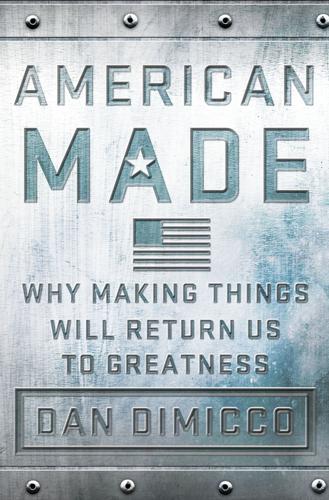
American Made: Why Making Things Will Return Us to Greatness
by
Dan Dimicco
Published 3 Mar 2015
The plan was to install 20 million “smart meters” over five years. Smart meters are simply digital versions of the old spinning electric meter. Power companies nationwide employ tens of thousands of people who do nothing but read the meters. With smart meters, utility companies don’t need meter readers anymore. As Sharan put it: “In five years, 20 million manually read meters are expected to disappear, taking with them some 28,000 meter-reading jobs. In other words, instead of creating jobs, smart metering will probably result in net job destruction.”25 Sharan calculated that installing 20 million new smart meters over five years would create about 1,600 new installation jobs.
…
In other words, instead of creating jobs, smart metering will probably result in net job destruction.”25 Sharan calculated that installing 20 million new smart meters over five years would create about 1,600 new installation jobs. Unfortunately, most of the smart meters are made overseas. The meters will require people who know how to maintain and service them, but that would create a few hundred jobs at most. Does that mean we should make a law protecting meter reader jobs forever? I don’t agree with that. For the same reasons we no longer have elevator operators, bowling pin setters, and newspaper copy boys, we’re unlikely to have meter readers in a few years’ time. The point is, when you look closely at the technology and the goals of green energy, you’re not likely to find the millions of jobs that our political leaders are promising.
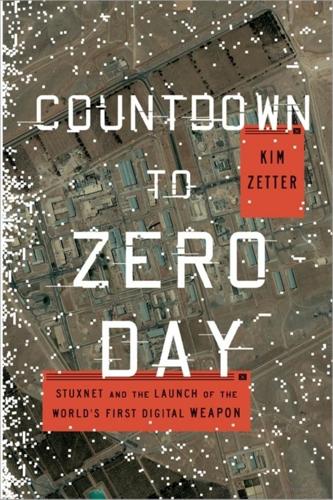
Countdown to Zero Day: Stuxnet and the Launch of the World's First Digital Weapon
by
Kim Zetter
Published 11 Nov 2014
Emergency generators would kick in at some critical facilities, but generators aren’t a viable solution for a prolonged outage, and in the case of nuclear power plants, a switch to generator power triggers an automatic, gradual shutdown of the plant, per regulations. One way to target electricity is to go after the smart meters electric utilities have been installing in US homes and businesses by the thousands, thanks in part to a $3 billion government smart-grid program, which has accelerated the push of smart meters without first ensuring that the technology is secure. One of the main problems security researchers have found with the system is that smart meters have a remote-disconnect feature that allows utility companies to initiate or cut off power to a building without having to send a technician.
…
But by using this feature an attacker could seize control of the meters to disconnect power to thousands of customers in a way that would not be easily recoverable. In 2009, a researcher named Mike Davis developed a worm that did just this. Davis was hired by a utility in the Pacific Northwest to examine the security of smart meters the company planned to roll out to customers. As with the Siemens PLCs that Beresford examined, Davis found that the smart meters were promiscuous and would communicate with any other smart meters in their vicinity as long as they used the same communication protocol. They would even accept firmware updates from other meters. All an attacker needed to update the firmware on a meter was a network encryption key.
…
Some vendors now use multiple network keys on their meters, assigning a different key for different neighborhoods to limit the damage an attacker could do with a single key. But the remote disconnect is still a problem with most smart meters, since an attacker who breaches a utility’s central server could do what Davis’s worm did, but in a much simpler way. “Were [the remote disconnect] not in there, none of this would really be all that much of an issue,” Davis says. “In my opinion, if it’s got the remote disconnect relay in it, whether it’s enabled or not … it’s a real big, ugly issue.” Going after smart meters is an effective way to cut electricity. But an even more effective and widespread attack would be to take out generators that feed the grid or the transmission systems that deliver electricity to customers.

Big Data Analytics: Turning Big Data Into Big Money
by
Frank J. Ohlhorst
Published 28 Nov 2012
Transaction volumes also fluctuate much faster, much wider, and much more unpredictably. Competition among firms is creating more data, simply because sampling for trading decisions is occurring more frequently and at faster intervals. Smart instrumentation. The use of smart meters in energy grid systems, which shifts meter readings from monthly to every 15 minutes, can translate into a multithousandfold increase in data generated. Smart meter technology extends beyond just power usage and can measure heating, cooling, and other loads, which can be used as an indicator of household size at any given moment. Mobile telephony. With the advances in smartphones and connected PDAs, the primary data generated from these devices have grown beyond caller, receiver, and call length.
…
Many industries fall under the umbrella of new data creation and digitization of existing data, and most are becoming appropriate sources for Big Data resources. Those industries include the following: Transportation, logistics, retail, utilities, and telecommunications. Sensor data are being generated at an accelerating rate from fleet GPS transceivers, RFID (radio-frequency identification) tag readers, smart meters, and cell phones (call data records); these data are used to optimize operations and drive operational BI to realize immediate business opportunities. Health care. The health care industry is quickly moving to electronic medical records and images, which it wants to use for short-term public health monitoring and long-term epidemiological research programs.
…
See Data mining Mobile devices Modeling Moore’s Law Mozenda N NAS National Oceanic and Atmospheric Administration (NOAA) National Science Foundation (NSF) Natural language recognition New York Times Noisy data NoSQL (Not only SQL) O Object-based storage systems OLAP systems OOZIE OpenHeatMap Open source technologies availability options pilot projects See also Hadoop Organizational structure Outsourcing P Parallel processing Patents Pentaho Performance measurement Performance-security tradeoff Perlowitz, Bill Pharmaceutical companies Pig Pilot projects Planning Point-of-sale (POS) data Predictive analysis Privacy Problem identification Processing Project management processes Project planning Public information sources Purging of data Q Queries R RAM-based devices Real-time analytics Recruitment of data analytics personnel Red Hat Relational database management system (RDBMS) Research and development (R&D) Resource description framework (RDF) Results Retailers anomalies Big Data use click-stream data data sources goal setting in-memory processing technology organizational culture Retention of data Return on investment (ROI) Risk analysis S SANS SAP Scale-out storage solutions Scaling Scenarios Schmidt, Erik Science Scope of project Scrubbing programs Security backup systems challenges compliance issues data classification data retention intellectual property rules technologies Semantics event-driven data distribution support mapping of technologies trends Semistructured data Sensor data filtering growth of types Silos Sloan Digital Sky Survey Small and medium businesses (SMBs) Smart meters Smartphones Snapshots Social media Software. See Technologies Sources of data. See Data sources Space program Specificity of information Speed-accuracy tradeoff Spring Data SQL limitations NoSQL Integration scaling Stale data Statistical applications Storage Storm Structured data Success, measurement of Supplementary information Supply chain T Tableau Public Taxonomies Team members Technologies application platforms Cassandra cloud computing commodity hardware decision making processing power security storage Web-based tools worst practices See also Hadoop Telecommunications Text analytics Thin provisioning T-Mobile Training Transportation Trends Trusted applications Turk Twitter U United Parcel Service (UPS) Unstructured data complexity of defined forms growth of project goal setting social media’s collection technologies varieties of U.S. census User analysis Utilities sector V Value, extraction of Variety Velocity Vendor lock-in Veracity Videos Video surveillance Villanustre, Flavio Visualization Volume W Walt Disney Company Watson Web-based technologies Web sites click-stream data logs traffic distribution White-box systems Worst practices Wyle Laboratories X XML Y Yahoo

The Zero Marginal Cost Society: The Internet of Things, the Collaborative Commons, and the Eclipse of Capitalism
by
Jeremy Rifkin
Published 31 Mar 2014
New studies, however, including one conducted by my global consulting group, show that with the shift to a Third Industrial Revolution infrastructure, it is conceivable to increase aggregate energy efficiency to 40 percent or more in the next 40 years, amounting to a dramatic increase in productivity beyond what the economy experienced in the twentieth century.8 The Internet of Things The enormous leap in productivity is possible because the emerging Internet of Things is the first smart-infrastructure revolution in history: one that will connect every machine, business, residence, and vehicle in an intelligent network comprised of a Communications Internet, Energy Internet, and Logistics Internet, all embedded in a single operating system. In the United States alone, 37 million digital smart meters are now providing real-time information on electricity use.9 Within ten years, every building in America and Europe, as well as other countries around the world, will be equipped with smart meters. And every device—thermostats, assembly lines, warehouse equipment, TVs, washing machines, and computers—will have sensors connected to the smart meter and the Internet of Things platform. In 2007, there were 10 million sensors connecting every type of human contrivance to the Internet of Things.
…
It is estimated that IT solutions—using social media—could drive the cost of solar down by 75 percent, making it cheaper than coal.31 The Cleanweb Movement in the United States is getting Big Data help from a new federal government initiative called Green Button. The program, which was launched in 2011, encourages power and utility companies to voluntarily provide easy access to real-time energy usage data now available for the first time because of the installation of millions of smart meters in homes and businesses. Smart meters are vital data collection points in the Energy Internet infrastructure. That data can be downloaded by the companies’ customers so they can have the information they need to more efficiently manage their energy use. In less than a year, the number of customers with instant access to their own energy use data ballooned to 31 million.32 Companies like Opower, Itron, First Fuel, Efficiency 2.0, EcoDog, Belkin, and Honest Buildings are scurrying to develop new applications and Web services that can use Green Button data to empower users to take control of their own energy future.33 This wealth of data on individual energy usage is now being leveraged through social media.
…
Inside the substation are batteries that allow the village to store power during the night or when there is cloud cover. A small computer transmits data back to the company’s offices in Jaipur. Wires on wooden poles transmit the electricity from the substation to scores of homes around the village, providing green electricity for more than 200 residents. Each home is equipped with a smart meter that informs the user how much electricity is being used and what it is costing at different times of the day.38 Green electricity is far less expensive than electricity from India’s national grid, and it eliminates the burning of highly polluting kerosene that is responsible for respiratory and heart diseases common throughout India.
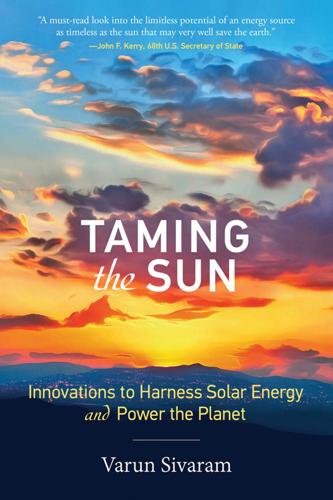
Taming the Sun: Innovations to Harness Solar Energy and Power the Planet
by
Varun Sivaram
Published 2 Mar 2018
The same applies to the power-intensive equipment in large buildings, which increasingly is controlled through smart building energy management control systems. Second, utilities are rolling out “smart meters” that measure household power consumption on a much more granular basis than every month—some measure it every hour, minute, or even second. These meters can communicate with the grid to help both grid operators and customers find out what the other needs. Over half of American households have smart meters now. Although the torrents of data pouring in from these meters have overwhelmed some utilities, others have started to manage power flows on the distribution grid intelligently to meet local customer needs.46 Third, two-way communications networks and software solutions are emerging that can be overlain on the new hardware to orchestrate effective demand response by managing distributed energy resources in concert.
…
Federal Trade Commission (FTC), Internet of Things: Privacy & Security in a Connected World (Washington, DC, November 2013, https://www.ftc.gov/system/files/documents/reports/federal-trade-commission-staff-report-november-2013-workshop-entitled-internet-things-privacy/150127iotrpt.pdf). 46. Jeff St. John, “US Smart Meter Deployments to Hit 70M in 2016, 90M in 2020,” Greentech Media, October 26, 2016, https://www.greentechmedia.com/articles/read/US-Smart-Meter-Deployments-to-Hit-70M-in-2016-90M-in-2020. 47. Aghaei and Alizadeh, “Demand Response in Smart Electricity Grids Equipped with Renewable Energy Sources: A Review.” 48. Christopher Findlay, “Strength in Numbers: Merging Small Generators as Virtual Power Plants,” Living Energy 4 (2011), http://www.energy.siemens.com/us/pool/hq/energy-topics/publications/living-energy/pdf/issue-04/Living-Energy-4-Virtual-Power-Plants.pdf. 49.
…
Utilities then oversize system components so that in the worst case—say, on a hot summer day with very high power demand from air conditioning—a substation or power line can deliver as much electricity as customers instantaneously need, even if that equipment is underutilized most of the year. Finally, most utilities have very little live information about how much power flows over the distribution grid. Until very recently, when some U.S. utilities began to roll out smart meters, they had no idea how much energy each customer consumed until a meter reader paid a monthly visit. These features make the power grid more expensive than it needs to be, and its sprawling infrastructure has innumerable points of potential failure that threaten the whole system. Utilities, meanwhile, have no incentive to move away from this paradigm.
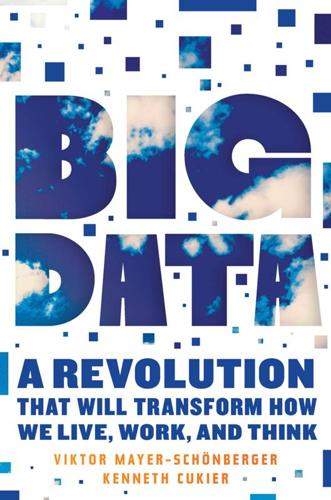
Big Data: A Revolution That Will Transform How We Live, Work, and Think
by
Viktor Mayer-Schonberger
and
Kenneth Cukier
Published 5 Mar 2013
On data used by Nazis in the Netherlands—William Seltzer and Margo Anderson, “The Dark Side of Numbers: The Role of Population Data Systems in Human Rights Abuses,” Social Research 68 (2001), pp. 481–513. [>] On IBM and the Holocaust—Edwin Black, IBM and the Holocaust (Crown, 2003). On the amount of data smart meters collect—See Elias Leake Quinn, “Smart Metering and Privacy: Existing Law and Competing Policies; A Report for the Colorado Public Utility Commission,” Spring 2009 (http://www.w4ar.com/Danger_of_Smart_Meters_Colorado_Report.pdf). See also Joel M. Margolis, “When Smart Grids Grow Smart Enough to Solve Crimes,” Neustar, March 18, 2010 (http://energy.gov/sites/prod/files/gc prod/documents/Neustar_Comments_DataExhibitA.pdf) [>] Fred Cate on notice and consent—Fred H.
…
Washington Post, July 19, 2010 (http://projects.washingtonpost.com/top-secret-america/articles/a-hidden-world-growing-beyond-control/print/). Query, Tim. “Grade Inflation and the Good-Student Discount.” Contingencies Magazine, American Academy of Actuaries, May-June 2007 (http://www.contingencies.org/mayjun07/tradecraft.pdf). Quinn, Elias Leake. “Smart Metering and Privacy: Existing Law and Competing Policies; A Report for the Colorado Public Utility Commission.” Spring 2009 (http://www.w4ar.com/Danger_of_Smart_Meters_Colorado_Report.pdf). Reshef, David, et al. “Detecting Novel Associations in Large Data Sets.” Science (2011), pp. 1518–24. Rosenthal, Jonathan. “Banking Special Report.” The Economist, May 19, 2012, pp. 7–8. Rosenzweig, Phil.

The Truth Machine: The Blockchain and the Future of Everything
by
Paul Vigna
and
Michael J. Casey
Published 27 Feb 2018
With the aid of sophisticated software monitoring, automated smart meters, and optimized, price-driven timing for individual device use, localized in-home “nanogrids” can receive a high-tech level of micromanagement that puts public utilities’ region-wide load-management strategies to shame. The revolution that started with smart thermostats like Nest and Ecobee is poised to go a lot further. But this low-cost, low-carbon-footprint future depends on two things: decentralized control of the energy system (of power generation, distribution, and consumption) and the capacity to design and run an intelligent system of interconnected smart meters and Internet-connected appliances and devices that respond to price signals.
…
The community was motivated by a desire to give environmentally conscious consumers and users the capacity to know they are buying clean, locally generated power as opposed to just helping pay their utility buy renewable credits that fund green energy production elsewhere in the United States. In the Transactive Grid, building owners install solar panels that are then linked together with those of their neighbors in a distribution network, using affordable smart meters and storage units, as well as inverters that allow the grid’s owners to sell power back to the public grid. The magic sauce, though, comes from a private blockchain that regulates the sharing of power among the smart meters, whose data is logged into that distributed ledger. And in the summer of 2017, LO3 took the process a step further by developing an “exergy token” to drive market mechanisms within and among decentralized microgrids such as Brooklyn’s.
…
And in the field of solar energy, a team that Michael’s leading is exploring a model that would capture usage rights to energy generated in a communally owned microgrid as a way to funnel collateralized financing to off-grid communities that don’t have well-established legal and property title systems. Already, a team composed of IoT startup Filament, Nasdaq, and a team from IDEO Colab has found a way to integrate signals from a smart meter device with a blockchain so as to prove that a uniquely identified photovoltaic panel has produced and delivered a verifiable, measurable amount of solar power. In effect, that proven flow of power could be registered as a kind of certified claim to solar energy, which can then be traded or collateralized.

Rebooting India: Realizing a Billion Aspirations
by
Nandan Nilekani
Published 4 Feb 2016
Pilot studies show that providing usage data to homeowners results in an average drop of 3–5 per cent in household electricity consumption.11 By allowing utilities to record usage patterns, smart meters also make it easier to detect theft and misuse. Italy has been a pioneer in the smart meter field; over 30 million smart meters have been brought into service since 2001, and 85 per cent of all Italian households now use smart meters to manage their electricity.12 The ability to monitor power sources in real time allows utilities to respond to demand-and-supply forces rapidly and with much greater accuracy.
…
Faults can be repaired remotely, obviating the need for a technician to manually do the job. Such sensors can also act as an early warning system in case of a power outage so that the problem can be rapidly identified and fixed remotely before it snowballs into a massive blackout like the ones that hit north India in 2012—the largest in recorded history.10 For consumers, smart meters can track electricity usage, transmitting information back to the power companies and to the consumers themselves. Consumers know exactly how much electricity they have been using, and this information can help prevent billing disputes. Utility companies can also start implementing time-of-day pricing schemes, charging customers a higher rate during times of peak load on the system.
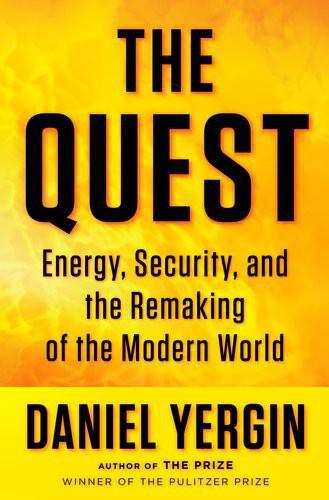
The Quest: Energy, Security, and the Remaking of the Modern World
by
Daniel Yergin
Published 14 May 2011
The smart grid is also something of a movement, and as such it is the recipient of substantial and increasing investment from the federal government, utilities, industry, and investors. The best-known subset is grouped around advanced metering infrastructure, otherwise known as the smart meter. Current meters, which in some sense have been around all the way back to the days of Samuel Insull, may be read once a month. The smart meter, by contrast, is a two-way device packed with much more capability. It eliminates the need for meter reading by sending information directly back to the utility, which thus knows in great detail what is happening to its load in real time.
…
At the same time, it provides homeowners with situational awareness about how much electricity they are using at any given moment. With the addition of a home-area network, that knowledge can be broken down appliance by appliance, so that the smart refrigerator or the smart television can talk to the smart meter. With all this knowledge—whether displayed on a control box, on the Internet, or on their cell phone—homeowners can turn things down or even turn them off to save money. The smart meter could, when overall demand is at the highest, enable the utility to reduce usage inside the house. For instance, during a heat wave that is straining the power system, the utility could reach out to people’s thermostats (with their approval) and raise the average setting from 68 degrees to 73 degrees.
…
For instance, during a heat wave that is straining the power system, the utility could reach out to people’s thermostats (with their approval) and raise the average setting from 68 degrees to 73 degrees. (Some utilities are partway there with “paging” devices that enable them to cycle off air-conditioning every 15 minutes out of every hour.) If the electric car becomes common, the smart meter would also play a crucial role in managing recharging so that it is done late at night, off-peak, when demand is the lightest. The smart meter can do one more thing: verify energy savings. That could be essential if the utility is “paying” people to be more energy efficient. All this is directed toward achieving two objectives: One is sharing peak demand, which reduces the need to use the most expensive generating plants, saves money, and could reduce the need to build additional expensive new generating units.
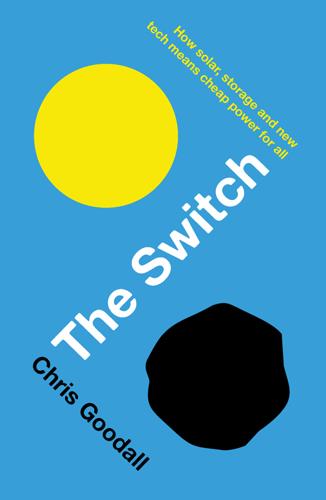
The Switch: How Solar, Storage and New Tech Means Cheap Power for All
by
Chris Goodall
Published 6 Jul 2016
A megawatt hour saved by OhmConnect is identical to a megawatt hour generated by a highly polluting power station that is turned on especially to capture the very high prices paid at times of stress. When they get the alert, customers can then choose to reduce their demand by turning off air conditioning or pool pumps, which are big users of electricity, or any other appliances in their home. Ninety per cent of Californian homes have so-called ‘smart’ meters that collect information on electricity usage minute by minute and send it back to utilities or companies like OhmConnect. The app looks at the pattern of usage over the last days and weeks and estimates whether the homeowner has run the house with a lower than expected amount of electricity during the ‘OhmHour’.
…
Interestingly, in winter electricity use declined over the whole day, not just the peak and there was little, if any, switching between periods of high and low prices. How does a utility such as the one in Ontario know when homes are using a lot of electricity? The answer is that it will have to install smart meters for all homes. Similar devices are gradually being put in UK homes to prepare for time-of-use tariffs. These meters can be set up to measure the amount of electricity used at differing times of the day and therefore calculate bills using the tariff for each slot. A householder or a business might be offered very low prices when the sun is shining or the wind is blowing.
…
When I have too much electricity and you have too little, Sonnen’s platform sells you my excess. If it has been a cloudy December day all across Germany, the company buys in wind power or electricity from anaerobic digestion plants to fill the gap. All this is handled automatically via its central software platform and the smart meters that tell it second by second how much power your PV system is generating and how much is actually being used in the home. The promise to members of the scheme is that the electricity bought in by the utility from other generators will cost about €0.23 a kilowatt hour, a discount of about 25 per cent on current German prices (but still somewhat more expensive that fossil fuel-generated electricity in the UK).

CIOs at Work
by
Ed Yourdon
Published 19 Jul 2011
All of that is coming in the very near future. And the other thing is that in the future there will be a lot more distributed generation. For example, there may be customers that are generating their own power through solar panels. We’re putting smart meters on everyone’s home so we can tell them—in the future—how much electricity they’re using at different times of the day. If customers want to be more efficient, these smart meters have the intelligence to tell them when they’re using a lot and determine what it is that’s driving usage up. Yourdon: I assume that’s just one small part of the overall buzzword of the “smart grid” that you folks in your industry are looking forward to over the next 10 or 20 years?
…
The problem with that title is that it implies that there is a stupid grid. Yourdon: [laughter] Ellyn: The grid is highly automated now. This is a re-automation of the grid. For example, at one time (this predates me) Detroit Edison had 140 engineers that just operated it. Today it’s done with just a dozen or fewer. As we go into more grid automation and smart meters and we can debate how smart they are, but meters to the extent that homeowners adopt a lot of home automation, and that remains to be seen, but there are a lot of people who are juiced about it. And we start to bring on a fair amount of electrical cars; electric vehicles; and the automation, billing, and management that is going to be in here.
…
Yourdon: I assume that’s just one small part of the overall buzzword of the “smart grid” that you folks in your industry are looking forward to over the next 10 or 20 years? Blalock: Absolutely. There is lots of transformation coming in that area, and we will be leaders in helping move in that direction. I could talk forever about the things that we see coming, but I do think mobility and business analytics are going to be huge. I think the smart meters and the electric vehicles are two technologies, not necessarily in IT that are going to revolutionize our business in the way people are going to use electricity. Yourdon: It certainly makes a lot of sense. You know, there’s one kind of mundane answer that I was expecting everybody to give me that I haven’t really heard, and that is the response from people who say, “We’re depending on Moore’s Law to continue for another decade”—you know, the fundamental law that says computing power doubles in price performance every 18 months.

Innovation and Its Enemies
by
Calestous Juma
Published 20 Mar 2017
The tensions revolve around issues such as privacy, security, pricing, and access to energy.69 Much of the debate is about the health impacts of non-ionizing electromagnetic radiation and parallels earlier debates related to cell phone towers. For example, the advocacy group Stop Smart Meters says that because of the installation of smart meters, “bills are skyrocketing, health effects and safety violations are being reported, and privacy in our homes is being violated.” It cautions that “children, pregnant women, seniors, those with immune deficiencies, medical conditions, pacemakers, and implants are particularly at risk.” According to the organization, the risks extend to animals and plants. Newspaper reports of the health effects of smart meters include headaches, interrupted sleep, dizziness, agitation, fatigue, skin rashes, ringing in the ears, leg cramps, and forgetfulness.
…
For a discussion of the complexities surrounding such issues, see Shelley McKellar, “Negotiating Risk: The Failed Development of Atomic Hearts in America, 1967–1977,” Technology and Culture 54, no. 1 (2013): 1–39. 69. Timothy Kostyk and Joseph Herkert, “Societal Implications of the Emerging Smart Grid,” Communication of the ACM 55, no. 11 (2012): 34–36. 70. David J. Hesse and Jonathan S. Coley, “Wireless Smart Meters and Public Acceptance: The Environment, Limited Choices, and Precautionary Politics,” Public Understanding of Science 23, no. 6 (2014): 688–702. Chapter 7 1. For a comprehensive review of the technical history of the industry, see Roger Thévenot, A History of Refrigeration throughout the World, trans.
…
See also names of individual states cold storage legislation, 196 support for domestic oils, 115 Status quo bias, 35 Steam-traction engines, 124 Steckel, Richard, 339n48 Steel, use in plows, 123 Steering wheels, 295 Stem cells, 15, 92 Stevenson, Robert Louis, 148 Stigmatization (demonization). See also Romanticization of alternating current, 144, 158–167, 171 of coffee, 45, 66 of margarine, 103 of new technologies, 8 product analogies and, 308–309 of technological innovation, 309 of telephone, 165–166, 309 of transgenic fish, 274 Stockholm, coffeehouses in, 62 Stop Smart Meters, 172–173 Storage goods, 186 Strasbourg, first printing of Bible in, 76 Street lighting, 146, 147, 149 Stupidity, Pessoa on, 280 Sublime Porte (Bâb-ı Âli), 83 Subramaniam, Chidambaran, 283 Subsidies to fishing industry, 259 Subsistence farming, 122 Substantial equivalence, 10 Success dynamics of, in scientific research, 327n115 factors affecting, 29–30 Succession in technological evolution, 326n106 Sufis, 47–48, 328n11 Sulfur dioxide, 190 Sulfuric acid, 179 Sultan of Cairo, 49 al-Sunbati, Ahmad ibn ’Abd al-Haqq, 50 Supermarkets, opposition to stocking of transgenic fish, 271, 273, 279 Supreme Court on antimargarine laws, 105 Diamond v.
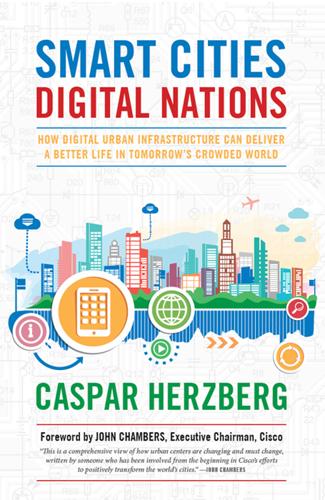
Smart Cities, Digital Nations
by
Caspar Herzberg
Published 13 Apr 2017
Although it was designed to help U.S. veterans who had been injured in combat, the prototype lost support and has not been manufactured since 2013. 6 Quoted from “The Adventure of the Copper Beeches,” Arthur Conan Doyle, 1893. 7 Independent researchers have demonstrated how devices such as smart meters and traffic sensors are vulnerable in the event of improper programming and encryption, human error, or taking advantage of the sheer number of devices that must be protected throughout a network. See Nicole Perlroth, “Smart Technology May Be Vulnerable to Hackers,” New York Times, April 21, 2015, http://bits.blogs.nytimes.com/2015/04/21/smartcity-technology-may-be-vulnerable-to-hackers/. Dan Kaplan, “Black Hat: Assessing Smart Meters for Hacker Footprints, Vulnerabilities,” SC Magazine, July 25, 2012, http://www.scmagazine.com/black-hat-assessing-smartmeters-for-hacker-footprints-vulnerabilities/article/251947/. 8 In addition to Cisco’s dedicated focus on security, there are many independent groups highlighting the vulnerabilities of devices and how consumers can protect themselves, e.g.
…
An innovator and his team have provided the world with a great technological advance, but it remains to be seen if global markets and political calculations will help in the creation of necessary supply chains.2 The “smart villages” of India, which must overcome the severe water shortage in that nation, will depend on exactly this sort of problem-solving. As for cities, the pursuit of a smart water delivery system is in the works in many of them, and it takes many forms. Some will rely on sensors to restrict waste. Others are exploring smart metering, which can more efficiently deliver water to agricultural and urban centers. Reading Diamandis and other thinkers who see the potential for exponential growth of technological solutions can drive away years of bad news. But is this “techno-optimism at its worst,” as one reviewer of Abundance complained?
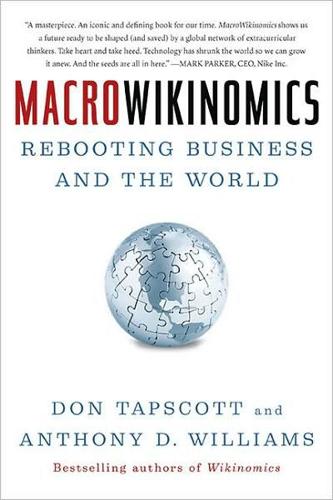
MacroWikinomics: Rebooting Business and the World
by
Don Tapscott
and
Anthony D. Williams
Published 28 Sep 2010
I’ll say, ‘Of course.’” To date, 8.3 million homes in America have been equipped with smart meters covering 6 percent of the population. The number is set to grow to 33 million by 2011, while the worldwide total will reach about 155 million.12 Cisco Systems estimates that by the time it all gets built out, the energy grid will be one thousand times larger than today’s Internet.13 Meanwhile, a vast and growing number of companies are already lining up to offer consumers tools to help them make sense of the smart meter data. Typically leadership does not come from the companies that dominated the old industrial era of energy, but from a new generation of companies that understand the age of networked intelligence.
…
Like other tech players in the emerging energy economy, Google is actively lobbying for open standards so that consumers are able to buy smart appliances, thermostats, or energy monitors from different companies and have them talk to each other. Personal Carbon Markets Pilots under way in Europe show how far the open-source grid concept could go. Homes across Europe, including Manchester, Birmingham, Bristol, Ruse (Bulgaria), and Cluj (Romania), have been equipped with advanced smart meters and sensor networks that track energy usage, efficiency, and overall household emissions to generate a real-time carbon footprint. Users pull up a Web-based interface to analyze the sources of their emissions, compare their home with the neighborhood, forecast household savings, or control their energy use remotely from a PC or a mobile phone.14 Like Google’s PowerMeter, the system developed by the Manchester City Council and its partners is an open platform, which means it can be seamlessly integrated with other applications for mobiles, TV, and social networks.
…
The mere fact that neighborhood trading schemes and personal carbon allowances are even being debated is a sign that the efforts under way to make our infrastructure more intelligent and interactive will pay large dividends. As we argued in the previous chapter, it’s easier to remain aloof about climate change when the connections between our actions and the climate seem vague and hard to measure. But it becomes harder to simply ignore one’s personal responsibility when the smart meter on your wall not only shows you your real-time carbon footprint, but also compares your score to the neighborhood average and offers you tips on how to improve. Coupled with a real price for carbon, this new transparency and interactivity provides the fuel for truly creative responses to some of the world’s great challenges.
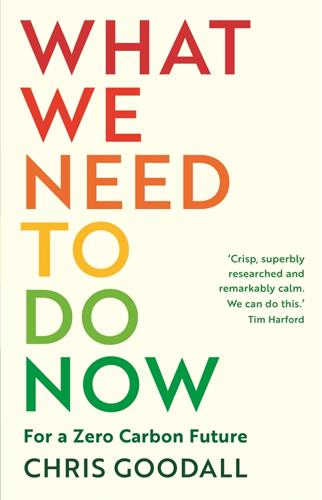
What We Need to Do Now: A Green Deal to Ensure a Habitable Earth
by
Chris Goodall
Published 30 Jan 2020
Orkney was pushed into experimenting because of the limited capacity of its connection to the mainland grid. Many islands around the world are following a similar path. Whether it be Hawai’i or the Isles of Scilly off the Cornish coast, the focus is on developing energy self-sufficiency by using advanced digital technologies, such as smart meters, to reduce dependence on energy from outside the area. Other places are beginning to notice these lessons. Many schemes now focus on trying to make ‘virtual islands’ in local areas. These also try to align the usage of electricity to its availability within a specific town or even smaller area.
…
The LO3 microgrid in Brooklyn, New York, is often seen as a model for others around the world. There, a variety of homes and businesses buy and sell electricity from each other. A cinema with solar panels supplies power to a home down the street, while a bakery imports from a battery in the house across the road. Buildings with smart meters record electricity usage every second and communicate the information to the LO3 network. This enables management of supply and demand and settlement of bills for the sale of electricity by one participant to another. If demand is temporarily too great, an effective microgrid system can turn off or turn down flexible uses of energy, such as electric vehicle charging or air conditioning.

If Mayors Ruled the World: Dysfunctional Nations, Rising Cities
by
Benjamin R. Barber
Published 5 Nov 2013
The resolution declared: “The United Nations Agenda 21 plan of radical so-called ‘sustainable development’ views the American way of life of private property ownership, single family homes, private car ownership and individual travel choices, and privately owned farms all as destructive to the environment.”14 Nor was this just right-wing rhetoric: the cities group Local Governments for Sustainability (ICLEI, described in some detail in Chapter 5) has become a particular target of Americans apprehensive about a loss of sovereignty. Simple conservation tools promoted by ICLEI, “smart meters” for example, have inspired an almost lunatic sense of peril. Such meters help measure electricity in the home and distribute its use to nonpeak hours, saving money and electricity for consumers and city budgets alike. Yet in Roanoke, Virginia, a protester insisted, “the real job of smart meters is to spy on you and control you—when you can and cannot use electrical appliances.”15 The Roanoke Board of Supervisors eventually voted to retain the city’s ICLEI funding, but only by a 3–2 vote.
…
See “The West Must Be Honest about Its Role in Libya’s Violent Chaos,” The Guardian, September 16, 2012. 14. R. Burdett and D. Sudjic, eds., Living in the Endless City, London: Phaidon, 2011. 15. Leslie Kaufman and Kate Zernike, “Activists Fight Green Projects, Seeing U.N. Plot,” New York Times, February 3, 2012. The paranoia about smart meters is ironic in light of the newly revealed global surveillance by the U.S. National Security Agency. 16. Charlie Savage, “Order on Interpol Work Inside U.S. Irks Conservatives,” New York Times, December 31, 2009. 17. Jean-Jacque Rousseau, The Social Contract, Book I, Chapter 8; ed. and trans. Victor Gourevitch, in The Social Contract and Later Political Writings, Cambridge: Cambridge University Press, 1997, pp. 53–54. 18.
…
See Virtues and vices of cities vs. countryside Villaraigosa, Antonio, 97, 145 Virtues and vices of cities vs. countryside, 29–49; American views of, 33–35; in arts and literature, 30–31, 37–39; backwardness of rural life, 37, 38, 40, 43, 48; capital cities in, 32–33, 35; cosmopolitan view, 36–37; decentrists on, 35–36, 45; dialectical view of, 41–43; European views of, 33; freedom and liberation, 30, 40; loss and decadence, 29–31; normative view of, 40–41; nostalgia for rural idyll, 29–31; opposing narratives on, 39–40; parks and public spaces, 44–48; and urban cowboys, 31–32 Voting: deliberative, 350, 390n28; online, 260 Walled towns, 60 Water: proximity to, 14–15, 60; safe drinking, 183, 206; smart meters for, 246 Wealth of cities, 55–58 Weapons of mass destruction, 128–129 Web. See Internet Weber, Max, 15, 42, 65 Weidman, Elaine, 247 Weiner, Anthony, 88 “We’re Number One!,” 115–116 Whitman, Walt, 3, 43, 53, 271–272, 281–282, 284–286 WICI (Women in Cities International), 122–123 “Wiki-government,” 266 Wiki-logic, 249, 252, 264 Wilderness, 64–65 Williams, Hank, Jr., 32 Williams, Raymond, 31, 39, 41, 191 Wilson, Robert, 272, 288 Wilson, William Julius, 221 Women: as mayors, 238–240; and microfinance, 230 Women in Cities International (WICI), 122–123 WOMEX (World Music Expo), 290 Workplaces, 63–64 World Conference of Mayors for Peace through Inner-city Solidarity, 122–123 World Economic Forum (Davos), 118–119 World Mayors Summit on Climate (Mexico City 2010), 6 World Music Expo (WOMEX), 290 World Wide Web.

Dragnet Nation: A Quest for Privacy, Security, and Freedom in a World of Relentless Surveillance
by
Julia Angwin
Published 25 Feb 2014
companies are building facial recognition technology into phones and cameras: Emily Steel and Julia Angwin, “Device Raises Fear of Facial Profiling,” Wall Street Journal, July 13, 2011, http://online.wsj.com/article/SB10001424052702303678704576440253307985070.html. technology to monitor your location: Keith Barry, “Insurance Company Telematics Trade Perks for Privacy,” Wired, August 19, 2011, http://www.wired.com/autopia/2011/08/insurance-company-telematics-trade-perks-for-privacy/. wireless “smart” meters: Jim Marston and Joshua Hart, “Should Consumers Participate in Their Utility’s Smart-Meter Program?,” Wall Street Journal, April 12, 2013, http://online.wsj.com/article/SB10001424127887323415304578368683701371280.html. Google has developed Glass: “Glass,” Google Inc., accessed July 22, 2013, http://www.google.com/glass/start/. The confidentiality of personal information: “Protecting Your Answers,” United States Census, 2010, https://www.census.gov/2010census/about/protect.php.
…
Searching for a bra could trigger an instant bidding war among lingerie advertisers at one of the many online auction houses. And new tracking technologies are just around the corner: companies are building facial recognition technology into phones and cameras, technology to monitor your location is being embedded into vehicles, wireless “smart” meters that gauge the power usage of your home are being developed, and Google has developed Glass, tiny cameras embedded in eyeglasses that allow people to take photos and videos without lifting a finger. * * * Skeptics say: What’s wrong with all of our data being collected by unseen watchers? Who is being harmed?
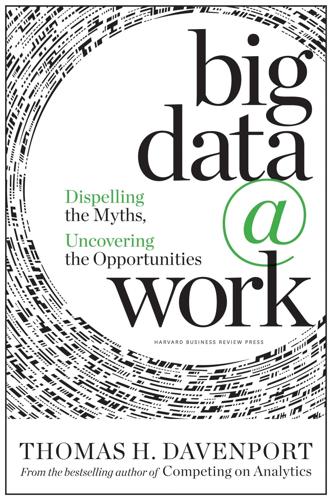
Big Data at Work: Dispelling the Myths, Uncovering the Opportunities
by
Thomas H. Davenport
Published 4 Feb 2014
These included: • Telecom firms, which had lots of data, but for some reason did not take advantage of it (perhaps because they had historically been a regulated monopoly or because they were busy with mergers and acquisitions) Chapter_02.indd 43 03/12/13 11:42 AM 44 big data @ work • Media and entertainment firms, which underachieved because they had decision cultures based on intuition and gut feel, and didn’t know how to assess whether people were looking at their content or not • Retailers had great data from point-of-sale systems, but most have underachieved with it until recently; Tesco and to some degree Walmart have been higher achievers • Traditional banks have massive amounts of data on the money their customers consume and save, but for the most part they have been underachievers in helping those customers make sense of it all and presenting targeted marketing offers to them • Electric utilities have been talking about the “smart grid” for a while, but are still a long way from achieving it; apart from some limited rollouts of smart metering devices and time-of-day pricing, very little thus far has happened in the United States This environment has changed dramatically with the advent of big data. Many of the also-ran industries in the previous generation of analytics can be leaders in the big data race, although in order to do so they need to change their behaviors and attitudes.
…
Companies adopting production-class big data environments need faster and lower-cost ways to process large amounts of Chapter_05.indd 126 03/12/13 1:04 PM Technology for Big Data 127 Figure 5-3 A big data technology ecosystem Web logs HDFS Images and videos Operational systems Social media Documents and PDFs MapReduce Data warehouses Data marts and ODS Source: SAS Best Practices. atypical data. Think of the computing horsepower needed by energy companies to process data streaming from smart meters, or by retailers tracking in-store smartphone navigation paths, or LinkedIn’s reconciliation of millions of colleague recommendations. Or consider a gaming software company’s ability to connect consumers with their friends via online video games. “Before big data, our legacy architecture was fairly typical,” an executive explained in an interview.
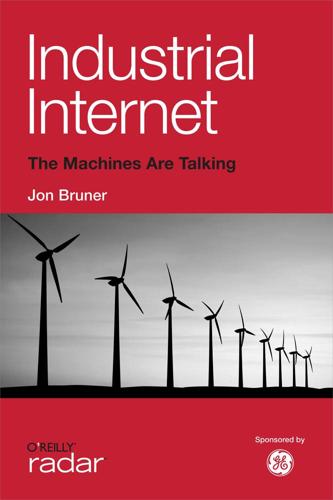
Industrial Internet
by
Jon Bruner
Published 27 Mar 2013
Reading electricity usage every 15 minutes — a 2,880-fold increase in resolution from the monthly data it was getting from human meter-readers — the utility can detect power outages and quality problems immediately, and have detailed data on scale and location. In one case, Sumner says, meters in one neighborhood started to show voltage drops that suggested a transformer needed to be replaced. It was early spring and electricity demand was low; without smart meters, the problem would have manifested itself in the summertime when customers turned on their air conditioners. “Had we not done anything with it, we would have had a catastrophic failure,” he says. “Previously, we didn’t know what was going on at the customer level,” Sumner says. “Imagine trying to operate a highway system if all you have are monthly traffic readings for a few spots on the road.
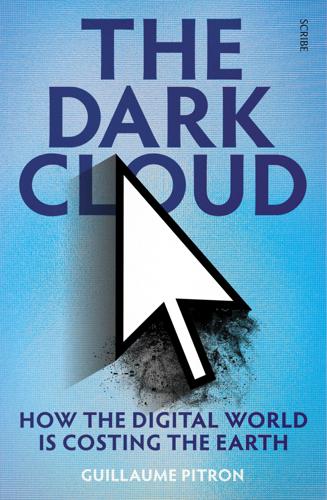
The Dark Cloud: How the Digital World Is Costing the Earth
by
Guillaume Pitron
Published 14 Jun 2023
In smart cities, the data collected and processed by information and communication technologies — sensors, geopositioning systems, and even artificial intelligence — will exponentially increase our interaction and collaboration as citizens in the interest of our planet. And the starting point of a greener world is a more organised one. Masdar is the full-scale test of just this. The city must rely solely on renewable energy without producing any carbon dioxide emissions or waste. To achieve this, it is equipped with movement sensors and smart meters that can more than halve the city’s electricity and water consumption; 1,800 self-driving vehicles making up the Personal Rapid Transit (PRT) transport network (according to current plans); and smart homes that adjust the air conditioning depending on whether their occupants are in or out, bringing household energy consumption down by 72 per cent.
…
Our photos on Instagram, our videos on Facebook, and our WhatsApp messages are not only on our phones; they are held at these interconnection points — servers (computers), to be precise — with which we communicate when surfing the web. Likewise, without this infrastructure, platforms for bartering with neighbours, dating sites, smart meters, and connected cars could not exist. For a long time, companies used to store their data on site in so-called technical rooms exiled to the back of a broom cupboard or the bathroom. Today, the biggest companies in the world (such as Google, Facebook, and Apple) still manage their own servers in privatised spaces.
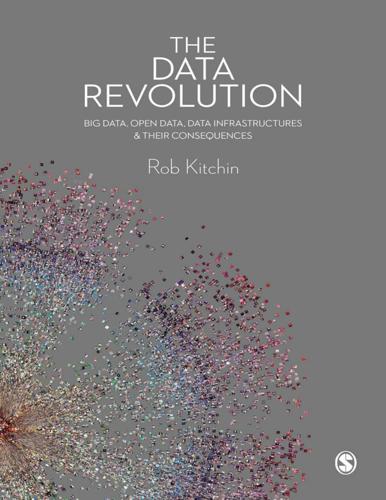
The Data Revolution: Big Data, Open Data, Data Infrastructures and Their Consequences
by
Rob Kitchin
Published 25 Aug 2014
Automated surveillance As surveillance technologies have become digital in nature and networked together it has become possible to automate various aspects of monitoring systems, and to add new techniques, to more effectively and efficiently track and trace the usage of different systems and places. An example of a manual form of surveillance that is increasingly becoming automated is smart metering. Here, automatic meter reading (AMR) technology is used to monitor and communicate utility usage without the need for manual reading (Hancke et al. 2013). Moreover, it can do these tasks on a continuous basis enabling a supplier to track usage in real-time, which has utility in matching demand with supply and in finding faults/leakage in a system.
…
They have also proposed: individuals entering into partnerships with developers wherein they can more proactively select what data they are willing to release, to whom, and under what circumstances; companies providing users access to their own data in a usable format for their own benefit; and that companies ‘share the wealth’ in the monetisation of personal data (Tene and Polonetsky 2012; Rubinstein 2013). An example of such a co-beneficial sharing of the wealth of data are smart grids where data generated by smart meters concerning household electricity consumption are used by the power company to produce supply efficiencies, with households supplied with apps that enable them to monitor their own use and adapt behaviour to save money. Industry, by and large, wants either the present provisions to continue or to be relaxed, with privacy administered through market-led regulation that does not stifle the economic leveraging of data.
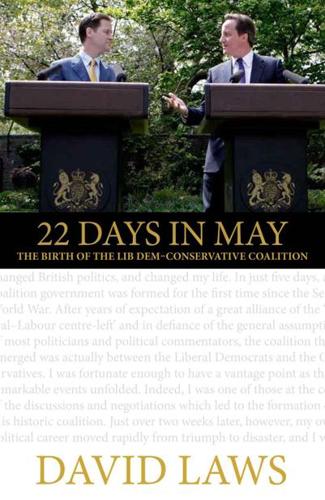
22 Days in May: The birth of the Lib Dem - Conservative coalition
by
Laws, David
Published 22 Nov 2010
The priority is to increase bank lending to small businesses to create and protect jobs and boost the recovery, with discussion between our two parties to identify the most effective way of achieving this; other measures will include a bank levy; an independent commission on structural reform of the banking system reporting within a year; and over the longer term efforts to recover the taxpayer money that has been invested in the banks. • Specific measures to fulfil our joint ambitions for a low carbon and carbon friendly economy, including: the establishment of a smart grid and the roll-out of smart meters; the full establishment of feed-in tariff systems in electricity – as well as maintenance of banded ROCs; measures to promote a huge increase in energy from waste through anaerobic digestion; the creation of a green investment bank; the provision of home energy improvement paid for by the savings from lower energy bills; retention of energy performance certificates while scrapping HIPs; measures to encourage marine energy; the establishment of an emissions performance standard that will prevent coal-fired power stations being built unless they are equipped with sufficient CCS to meet the emissions performance standard; the establishment of a high-speed rail network; the cancellation of the third runway at Heathrow; the refusal of additional runways at Gatwick and Stansted; and the replacement of the Air Passenger Duty with a per flight duty; the provision of a floor price for carbon, as well as efforts to persuade the EU to move towards full auctioning of ETS permits; measures to make the import or possession of illegal timber a criminal offence; measures to promote green spaces and wildlife corridors in order to halt the loss of habitats and restore biodiversity; mandating a national recharging network for electric and plug-in hybrid vehicles; continuation of the present Government’s proposals for public sector investment in CCS technology for four coal-fired power stations; and a specific commitment to reduce central government carbon emissions by 10 per cent within 12 months.
…
• A new mechanism to prevent the proliferation of unnecessary new criminal offences. 11. Environment The parties agree to implement a full programme of measures to fulfil our joint ambitions for a low carbon and eco-friendly economy, including: • The establishment of a smart grid and the roll-out of smart meters. • The full establishment of feed-in tariff systems in electricity – as well as the maintenance of banded ROCs. • Measures to promote a huge increase in energy from waste through anaerobic digestion. • The creation of a green investment bank. • The provision of home energy improvement paid for by the savings from lower energy bills
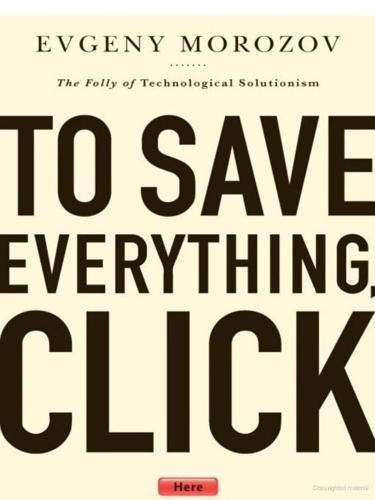
To Save Everything, Click Here: The Folly of Technological Solutionism
by
Evgeny Morozov
Published 15 Nov 2013
To return to Albert Hirschman’s futility-perversity-jeopardy triad, the first of those concerns doesn’t seem to be a problem. Unless they find a way to easily circumvent it, drivers will likely comply with the smart metering system; there’s no good reason to deem the scheme futile—at least not yet. A charge of perversity, too, is hard to substantiate: it’s not obvious how smart sensor-based metering could worsen the parking situation. What about jeopardy? Is there a “previous, precious accomplishment,” to use Hirschman’s language, that smart metering endangers? There is, of course, the standard set of criticisms associated with situational crime prevention discussed at length in Chapter 6.
…
In this sense, the Santa Monica scheme is futile (in Hirschman’s sense) in that it doesn’t really alter how drivers and citizens relate to the problems of parking and congestion. Potentially, the scheme is also perverse, especially if it gives us citizens who no longer feel the need to show concern for other drivers, the city, or the environment whenever smart meters and other forms of policing are missing. Such schemes thwart the development of what we earlier called “narrative imagination” and what some design theorists call “system thinking”—an intellectual approach that grants complexity to both the causes and effects of a problem and, instead of reducing the roots of that problem to a handful of easily identifiable and controllable factors, seeks to redescribe them in the language of relations, structures, and processes.
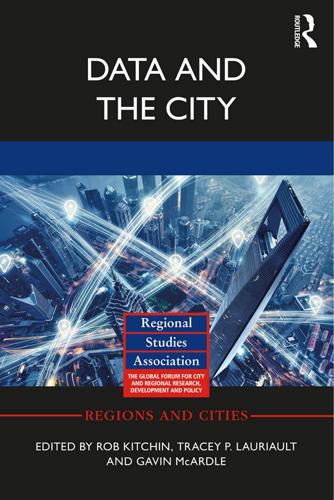
Data and the City
by
Rob Kitchin,Tracey P. Lauriault,Gavin McArdle
Published 2 Aug 2017
Such data-driven technologies include: urban control rooms, e-government systems, city operating systems, coordinated emergency 2 R. Kitchin, T. P. Lauriault and G. McArdle response systems, intelligent transport systems, integrated ticketing, real-time passenger information, smart parking, fleet and logistics management, city dashboards, predictive policing, digital surveillance, energy smart grids, smart meters, smart lighting, sensor networks, building management systems and a wide plethora of locative and spatial media. Collectively these technologies are generating an ever-growing tsunami of indexical data (uniquely linked to people, objects, territories, transactions) that can be repurposed in diverse ways – for example, in predictive profiling and social sorting of citizens and neighbourhoods, creating urban models and simulations, for policing and security purposes, etc.
…
Mackenzie, A. (2016) ‘Code traffic: Code repositories, crowds and urban life’, in R. Kitchin and S. Perng (eds), Code and the City. London and New York: Routledge, pp. 72–87. Marcus, G.E. and Saka, E. (2006) ‘Assemblage’, Theory, Culture & Society 23(2–3): 101–106. Marres, N. (2012) ‘On some uses and abuses of topology in the social analysis of technology (or the problem with smart meters)’, Theory, Culture & Society 29(4–5): 288–310. Martin, L. and Secor, A.J. (2014) ‘Towards a post-mathematical topology’, Progress in Human Geography 38(3): 420–438. McFarlane, C. (2009) ‘Translocal assemblages: Space, power and social movements’, Geoforum 40(4): 561–567. McLuhan, M. (1994) Understanding Media: The Extensions of Man.
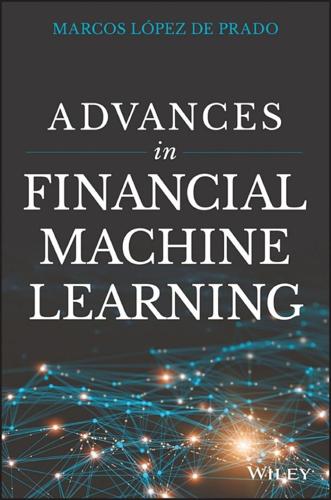
Advances in Financial Machine Learning
by
Marcos Lopez de Prado
Published 2 Feb 2018
H. et al. (2014): “Exploring irregular time series through non-uniform fast Fourier transform.” Proceedings of the 7th Workshop on High Performance Computational Finance, IEEE Press. Todd, A. et al. (2014): “Insights from Smart Meters: The potential for peak hour savings from behavior-based programs.” Lawrence Berkeley National Laboratory. Available at https://www4.eere.energy.gov/seeaction/system/files/documents/smart_meters.pdf. Wu, K. et al. (2013): “A big data approach to analyzing market volatility.” Algorithmic Finance. Vol. 2, No. 3, pp. 241–267. Wu, L. et al. (2016): “Towards real-time detection and tracking of spatio-temporal features: Blob-filaments in fusion plasma.
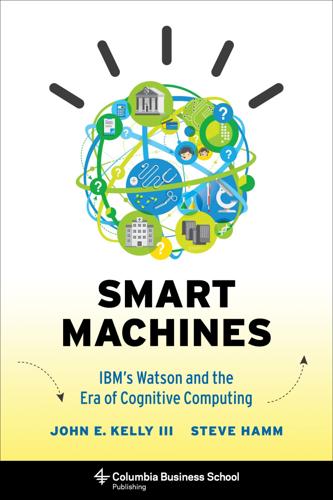
Smart Machines: IBM's Watson and the Era of Cognitive Computing (Columbia Business School Publishing)
by
John E. Kelly Iii
Published 23 Sep 2013
Previously, using less sophisticated techniques, it might take days of computation to arrive at a useful result; now it can be done in seconds. In addition, as models are tested against real-world outcomes, they learn and get better over time. To see how stochastic optimization works, consider an electricity grid. Today, many electrical-distribution systems are outfitted with smart meters that make it possible for consumers and operators of the system to know how much energy is being used in real time. Based on that information, consumers can make informed choices about their consumption levels, and operators can predict with a reasonable certainty what demand will be at a specific time.

Live Green: 52 Steps for a More Sustainable Life
by
Jen Chillingsworth
Published 19 Feb 2019
Search online for the best deal and look for companies that provide 100% renewable electricity. HEATING Reduce the temperature on your thermostat by one degree and you’ll find a significant reduction in your bill, while barely noticing the difference. If you have thermostats on your radiators, set the temperature for each room that requires heating. GET A SMART METER These show you exactly how much energy you are using and how much it costs. Seeing the numbers creep up on the meter makes you think more about any energy you are wasting, encouraging you to make positive changes where you can. TELEVISION Did you know that the larger the television you have, the more electricity it uses?

Four Futures: Life After Capitalism
by
Peter Frase
Published 10 Mar 2015
As an alternative, some cities are experimenting with various schemes for pricing street parking, often under the influence of UCLA parking theorist Donald Shoup.21 One of Shoup’s key themes is that urban governments should avoid under-pricing street parking, because to do so leads to Soviet-style shortages as described above, along with tedious rationing rules such as two-hour limits and the like. Under the influence of this theory, the city of Los Angeles decided to implement a wireless smart-metering system called LA Express Park. Sensors are installed in the pavement below each space, and they detect the presence of cars in a given area. The computerized system then automatically adjusts the price of parking depending on how many spaces are filled. When spaces are in high demand, the price can rise as high as $6 per hour, and when many spaces are available they can be as cheap as 50 cents.
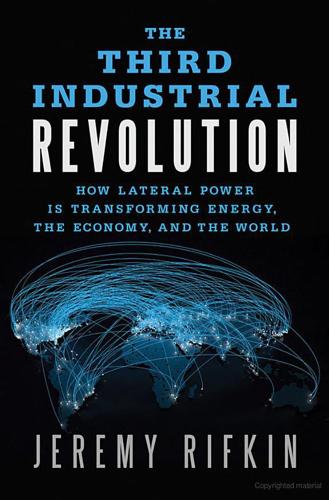
The Third Industrial Revolution: How Lateral Power Is Transforming Energy, the Economy, and the World
by
Jeremy Rifkin
Published 27 Sep 2011
These employment estimates are small, however, in comparison to the jobs that will be created with the €1 trillion the European Commission now projects is needed for public and private investment over the next ten years to bring the distributed smart grid network online across the world’s largest economy.41 Today’s idea of a distributed smart grid was not what most of the major ICT companies had in mind when they first began to talk about intelligent utility networks. Their early vision was for a centralized smart grid. The companies foresaw digitalizing the existing power grid, with the placement of smart meters and censors, to allow utility companies to collect information remotely, including keeping up-to-the-minute information on electricity flows. The goal was to improve the efficiency of moving electricity across the grid, reduce the costs of maintenance, and keep more accurate records on customer usage.
…
CPS and the city have already saved 142 megawatts of electricity in the past two years and have set a target of a 771-megawatt reduction in electricity use by 2020. Building on their already significant achievement in renewable energy generation of 910 megawatts, San Antonio expects to generate 1,500 megawatts of renewable energy by 2020.30 CPS is also beginning to assemble a smart grid, with a two-year initiative to install 40,000 smart meters in buildings across the metropolitan region. CPS has also entered into an agreement with GM to provide power charging stations for the Chevy Volt.31 All in all, San Antonio is on its way toward a TIR economy. COUNTERINTUITIVE COMMERCE The most important challenge facing CPS is transforming its business model and management style to accommodate the requirements of a new distributed-energy era managed by Internet communication technology.
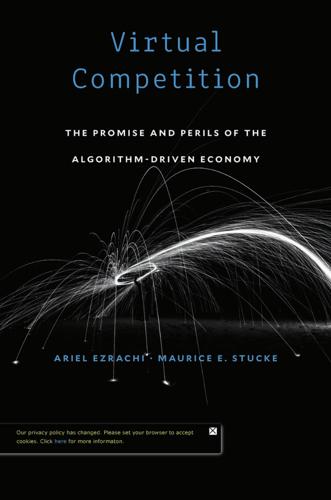
Virtual Competition
by
Ariel Ezrachi
and
Maurice E. Stucke
Published 30 Nov 2016
Our “real” and “online” environments are converging, and digitalization will seemingly track individuals before their birth to their death.67 These developments may improve our welfare well beyond online commerce. For instance, health ser vices could provide faster response and monitoring through automated data collection. Smart meters and appliances can help optimize our electricity usage. Even our local authorities can optimize their ser vices by carefully collecting and using data from various sources.68 In the context of our discussion, one distinct trend is the shift from brick-and-mortar stores to online sites. We see this already with Amazon’s sprawling platform.
…
It will become more proactive—making recommendations on entertainment, commenting on the music we listen to or the books we are reading. By complimenting and cajoling, sharing thoughts with us on recent events, sending personalized notes on special occasions, reminding us of presents, suggesting popular gifts trending among the recipient’s friends, and informing us about information from our smart meters and smart sensors, it will ingrain itself in our lives. We will wonder how we ever managed without a digital personal assistant. While we appreciate this free ser vice, we will not know its exact cost. When it joins our chats to make suggestions, or at times makes suggestions counter to those made by other helpers, we may not know whether it is being helpful or simply manipulating our behav ior.

The People vs Tech: How the Internet Is Killing Democracy (And How We Save It)
by
Jamie Bartlett
Published 4 Apr 2018
FUTURE GOVERNMENT The technologies in this book might be currently undermining democracy, but they also offer exciting opportunities to dramatically improve the way that government works. We need a bold programme of reform, which brings democracies up to speed. First, there’s scope for government departments to make better and more efficient decisions using data and AI. Smart meters could help save energy bills for people, welfare payments could be better targeted and police resources better allocated – provided this is all done ethically, with public involvement and with humans in the loop. Similarly, powerful AI used in the public interest could yield remarkable benefits in health research, spending decisions, intelligence, strategy and much more.
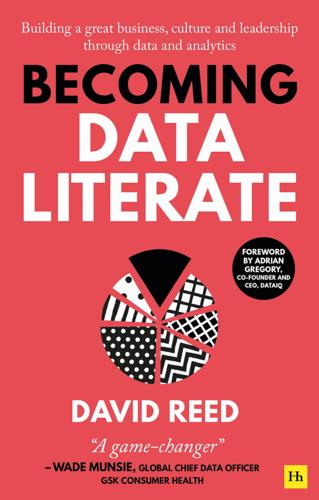
Becoming Data Literate: Building a great business, culture and leadership through data and analytics
by
David Reed
Published 31 Aug 2021
Examples of data for good activities being undertaken in 2020 include: EDF ‘Force for good’: The utility applied data and analytics to ensure that the most vulnerable members of society were given a helping hand. Using a combination of smart consumption analysis and Priority Services data, it implemented various welfare initiatives and mobilised more than 185 smart meter engineers to support energy emergencies, deliver medicine, provide essential meter credit top-ups and, in some cases, even buy and deliver essential shopping to some of society’s most vulnerable members during the Covid-19 pandemic. Fields in Trust: Green space has never been more important for physical and mental well-being and also has an estimated £34.2 billion of value in the UK alone, yet access is not equal across the population.
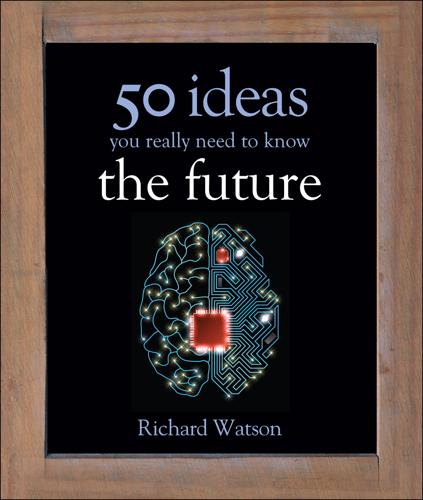
50 Future Ideas You Really Need to Know
by
Richard Watson
Published 5 Nov 2013
the condensed idea Locally produced and distributed energy timeline 1816 First energy company established in USA 1821 First electric motor 1839 Discovery of photovoltaic effect 1882 First hydroelectric power plant 1888 Tesla invents AC alternator 1892 General Electric founded 1980 First US wind farm 2030 Wind farms start to be demolished 2035 Most homes engaged in local energy trading 2040 Personal energy harvesters become mandatory 13 Smart cities Stuff that was once “dumb” is becoming smart. Pipes, roads, buildings and even whole cities are no exception. Whether it’s smart meters for water supply, appliances that work out when it’s best to be switched on, or dynamic tolling for roads, we can expect more efficiency, less waste, faster fixing and more pricing that’s responsive to real-time demand. Back in the 1990s, David Gelernter, a professor of computer science at Yale University, wrote a book called Mirror Worlds.

Demystifying Smart Cities
by
Anders Lisdorf
Consequently, much of current smart city initiatives have focused on this area.Water – Without sufficient clean water, humans cannot sustain life. This means that any gains in efficiency or quality are particularly valuable for the city. Since water is a scarce resource, minimizing waste is also often a focus area. McKinsey estimates that water consumption can be lowered by 20–30%. This can be done with smart meters and leakage control. Energy – Is a fundamental need for almost every function of the city, and cities are main consumers of energy on a global scale. Similar to water, energy is a scarce resource that we try to reduce with initiatives like dynamic electricity pricing and smart lighting solutions that turn light on and off depending on need.

The Wide Lens: What Successful Innovators See That Others Miss
by
Ron Adner
Published 1 Mar 2012
The good news here is that around the world governments and utilities are investing to deploy smart-grid technologies to help circumvent this problem. “Smart grid” is a catchall term for a host of technologies that can respond to, and even predict, the individual demands placed on the electric system and adjust load and distribution accordingly. These include smart meters that adjust the price charged for electricity in real time, smart automation that can turn electric equipment and appliances on or off depending on the load on the grid, and smart distribution that can help ensure that local power lines are not overloaded. The better news is that this technology is already available.

The Self-Made Billionaire Effect: How Extreme Producers Create Massive Value
by
John Sviokla
and
Mitch Cohen
Published 30 Dec 2014
We conducted an interview recently with a candidate whose Producer status was unmistakable. When asked about a business he would like to pursue, he outlined a consulting practice aimed at helping organizations manage the risks of damage to the electric grid. Over the course of a twenty-minute conversation, he explained his view that the current thrust of investment in smart meters and at-the-source energy use management was overemphasized (as he put it, a relatively small problem with relatively limited profit potential) and that the real opportunity centered around the aging utilities’ infrastructure, grid damage caused by intensifying natural disasters, security concerns, and the risks that massive failure poses to all types of organizations—federal governments, local municipalities, insurance companies, as well as utilities, and other businesses.
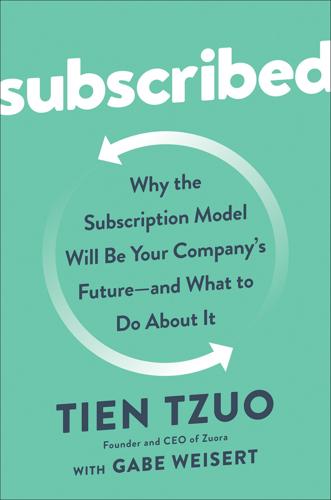
Subscribed: Why the Subscription Model Will Be Your Company's Future - and What to Do About It
by
Tien Tzuo
and
Gabe Weisert
Published 4 Jun 2018
THE INTERNET OF THINGS Over the past five years, thousands of manufacturing businesses around the world have quietly been investing huge sums of money into sensors and connectivity. They’ve been hard at work putting sensors into everything they make: doors, chairs, pipes, tiles, windows, tables, sidewalks, rebar, lights, shoes, bottles, tires, bricks, etc. According to various predictions, by 2020 we’re expected to have more than a billion smart meters, 100 million connected lightbulbs, more than 150 million 4G-connected cars, 200 million smart home units, several billion smart clothing units, more than 90 million wearables. And what do these sensors allow these products to do? Collect and transmit data—lots of it. All of these products will be beaming information back into centralized servers, so companies can start using analytic platforms to look for patterns and ways to improve things (you want to talk big data?
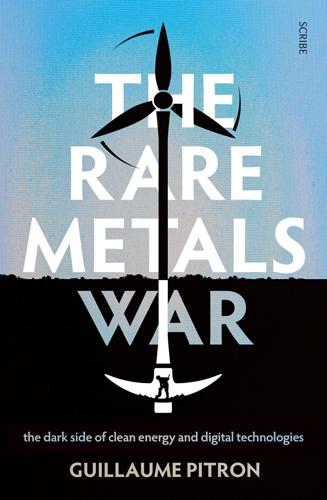
The Rare Metals War
by
Guillaume Pitron
Published 15 Feb 2020
And the once-distinct functions of green and digital technologies are beginning to converge. Indeed, increasingly sophisticated software and algorithms used in ‘smart grids’ make it possible to regulate fluctuations in the flow of electricity between producers and consumers. This is precisely what the 80 million smart meters already installed in the US are doing. In the smart cities of tomorrow, which will combine green and digital technologies, we will save up to 65 per cent of the electricity we use today, thanks to sensor-embedded streets that adjust the lighting to foot traffic, while weather-prediction software makes solar panels 30 per cent more efficient.

Reinventing Capitalism in the Age of Big Data
by
Viktor Mayer-Schönberger
and
Thomas Ramge
Published 27 Feb 2018
The future of our economy lies in the clever exploitation of our informational surplus, and data-rich markets are the mechanisms and the places where we can achieve this. When artificial intelligence and Big Data meet the social reality of human coordination, we can become more sustainable. Spurred by “smart meter” technology, for example, energy markets will become data-rich, transitioning from their inefficient and fragile current state, in which a limited number of large producers provide energy for many, toward a much thicker market in which a huge number of diverse participants, including home-based producers of energy (think solar) and storage (think batteries), can better coordinate with each other.

Age of the City: Why Our Future Will Be Won or Lost Together
by
Ian Goldin
and
Tom Lee-Devlin
Published 21 Jun 2023
Another example of what is possible is Ljubljana, the capital of Slovenia, where investments by the government in public transport and cycle routes have made a car-free city a reality.49 Making buildings more energy-efficient is another major area of opportunity for cities, with the potential to reduce emissions and save money at the same time. Solar panels can be affixed to urban rooftops. Households can be equipped with smart meters to better understand their energy usage. Homes, offices, shops and the like can be insulated to reduce temperature variability. District heating systems can capture waste heat produced at industrial sites and use it to warm buildings throughout the city. Adding more green space to cities is also important.
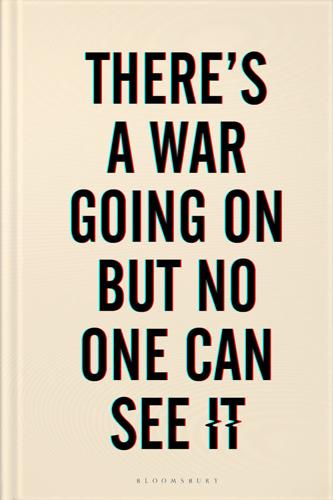
There's a War Going on but No One Can See It
by
Huib Modderkolk
Published 1 Sep 2021
Take your kids out of school, leave your nice house behind and wave your neighbours goodbye? * Warnings about digitisation are met with the same doubts and uncertainty. All day long we go around calling, sharing and liking. We enjoy the convenience the digital era has brought us – the smartwatches that monitor our heart rates, the smart meters that clock our energy consumption and the smartphones that let us navigate wherever we want to go. And, sure, we hear the warnings. Beware: these devices are minutely tracking your routines. Watch out: new threats are looming. States are increasingly using the internet to control and influence.
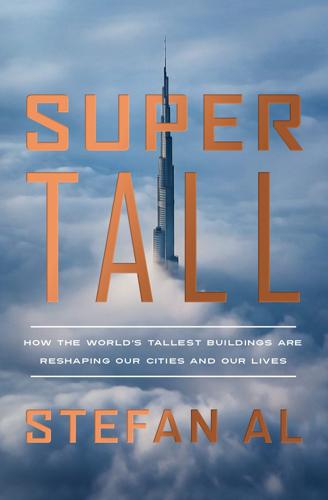
Supertall: How the World's Tallest Buildings Are Reshaping Our Cities and Our Lives
by
Stefan Al
Published 11 Apr 2022
The fundamentals of these grids date back to Thomas Edison’s 1882 Pearl Street Station plant, an electricity-generating coal plant. As a result, buildings today cannot share resources—for instance, the way mycorrhizal fungal bridges share resources among trees. With new technology, including sensors inside of smart meters, the regular one-way grid can become a two-way system. This smart grid can move the excess energy generated from the photovoltaics on your office’s rooftop over to power another building. There may be another lesson to learn from our ecosystem. There is no “waste” in nature, since one species’ waste may be used productively by another species further down the food chain.

Industry 4.0: The Industrial Internet of Things
by
Alasdair Gilchrist
Published 27 Jun 2016
The networking of these digital things will also provide a huge spinoff for telecom companies and Internet service providers who will have to provide the traffic transportation between devices. Indeed, telecom companies are predicting huge increases in the number of SIMS and data modems integrated into all sorts of remote devices, such as vending machines, connected cars, trucks for fleet management, smart meters, and even remote health monitoring equipment, by 2020. Automation is the way forward and, as we have just seen, it relies heavily on effective M2M in the process chain. M2M should play a large part in the business convergence and digital transformation process, as it not only improves productivity through overall equipment effectiveness but also allows for new and innovative business models.

Frugal Innovation: How to Do Better With Less
by
Jaideep Prabhu Navi Radjou
Published 15 Feb 2015
He believes that, much like the telecoms sector after its liberalisation, Europe’s energy-sector deregulation will create competition, and push firms towards more frugal, distributed energy systems. Digitisation involves the convergence of energy technologies and digital tools that help to create connected homes and buildings. This convergence, Mestrallet believes, will help customers use energy more responsibly and cost-effectively (thanks to smart meters) and even enable some to produce their own energy (with advanced home-energy storage technologies). Deregulation is not the only reason utility firms such as GDF Suez are investing in decentralised and digitised energy-production systems. The bigger motivation is to respond to a structural economic trend not seen since the first world war: the deceleration of energy consumption in developed countries.

The Lost Decade: 2010–2020, and What Lies Ahead for Britain
by
Polly Toynbee
and
David Walker
Published 3 Mar 2020
But, of course, it was a private company, with profits to cosset (£7.4 billion in 2018–19). Labour took its cue, making broadband coverage a theme in the 2019 election. For a decade the government hesitated and stood back, unwilling to think afresh about privatisation or its regulation. It refused to require train operators to speed up wi-fi provision or to link household smart meters with a data network. ‘Talks beset by infighting,’ reported the Financial Times, as O2, Vodafone, EE and Three tried to escape an Ofcom injunction to ensure 95 per cent of the UK’s landmass was covered. In a confused tangle of rebates on licences and opaque bargaining with the regulator, the companies’ disunity and the government’s unwillingness to push were exposed.
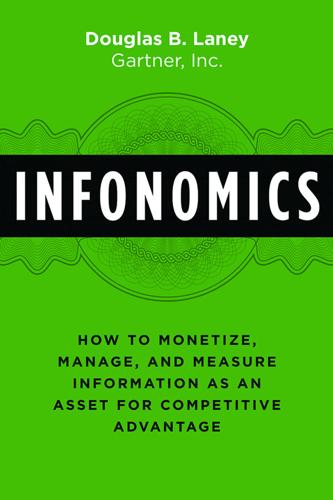
Infonomics: How to Monetize, Manage, and Measure Information as an Asset for Competitive Advantage
by
Douglas B. Laney
Published 4 Sep 2017
Operational Data This is information about customers, suppliers, partners, and employees that is readily accessible in online transaction processing and/or online analytical databases. It typically includes transactional data, contact data, process data, and reference data such as master data. Enterprises often have the opportunity to collect even more information during the course of business via sensors or process monitoring such as: Log data, Smart meters, Internet-connected devices (e.g., IoT), Voice/phone, Security camera feeds, RFID, and Wireless signals. For example, XO Communications now analyzes 500 discrete customer data elements including call patterns, late or delinquent payments, and other vital signs. After just a four-month implementation, XO reduced customer churn by 47 percent, protecting $15 million in revenue.10 And Memorial Healthcare System integrated information from eight hundred disparate databases for greater visibility into vendor activities, resulting in a 40 percent reduction in vendor invoice cycle times that led to vendor discounts totaling over $2 million.11 Dark Data This is information collected during the course of business that remains in archives, is not generally accessible, or is not structured sufficiently for analysis.

Ten Technologies to Save the Planet: Energy Options for a Low-Carbon Future
by
Chris Goodall
Published 1 Jan 2010
More and more countries intend to provide homes with “smart” electricity meters that can be remotely instructed to switch appliances off or that can limit total household power use to a set level—say, 3 kilowatts. Already, some French homes are fitted with meters that restrict energy consumption to this level. In Italy, almost all the customers of the main electricity company have smart meters and can reduce their bills by switching their electricity use to the times of day when prices are lowest. More advanced meters could be used to switch off non-critical machines such as dishwashers and washing machines at moments when wind power drops. The technology is already available to do this.
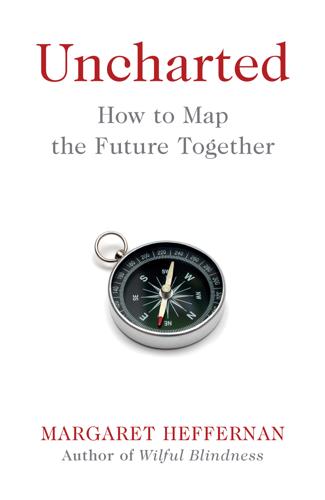
Uncharted: How to Map the Future
by
Margaret Heffernan
Published 20 Feb 2020
This is the thinking behind Amazon’s anticipatory shopping patent.43 Instead of customers making their own decisions, Amazon decides for them, sending what they want before they know they want it. It is, as one commentator noticed, one more step towards cutting out human agency altogether.44 Pervasive monitoring devices – smartphones, wearables, voice-enabled speakers and smart meters – allow companies to track and manage consumer behaviour. The Harvard business scholar Shoshana Zuboff quotes an unnamed chief data scientist who explains: ‘The goal of everything we do is to change people’s actual behavior at scale . . . we can capture their behaviours and identify good and bad [ones].

Falter: Has the Human Game Begun to Play Itself Out?
by
Bill McKibben
Published 15 Apr 2019
With a colleague, Joe Philip, who is Indian American and had been working at the renewable energy start-up SunEdison, Poindexter put together a small round of financing in 2015, and they started their first project in the Kumasi region, under the Black Star Energy label. (Check out the Ghanaian flag and you’ll get the name.) None of it was easy. American-style smart meters, at fifty bucks a pop, were way too expensive, for instance, so Philip and his team built their own, at a buck apiece, with chips ordered from Amazon. Kumasi, the regional capital, where Black Star’s headquarters was located, had grid power as unreliable as everyplace else in Ghana, making the office almost impossible to work in.

Reset: How to Restart Your Life and Get F.U. Money: The Unconventional Early Retirement Plan for Midlife Careerists Who Want to Be Happy
by
David Sawyer
Published 17 Aug 2018
Reduce bollocks purchases (lattes, meals at the health club and work lunches): £200. Ditch childcare (while both working full-time hours): £150. Ditch cleaner (DIY: easy after the physical declutter): £80. Ditch shared office (while retaining an office facility): £65. Renegotiate utility bill (gaining a smart meter): £35. Renegotiate mobile phone bills (while upgrading to 4G): £30. Petrol (through a reduced commute and increased use of our bikes): £25. Renegotiate landline/broadband (doubling speed): £10. Renegotiate life insurance (while increasing cover): £5. Total Monthly Savings: £900.
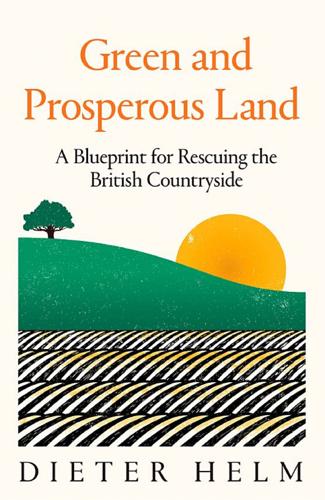
Green and Prosperous Land: A Blueprint for Rescuing the British Countryside
by
Dieter Helm
Published 7 Mar 2019
What about bringing back the house sparrow, by carefully focusing on both building design to create nesting sites and also their food supplies? There are many more people in cities so there are many more people to join in and benefit from a great resurrection of key species, and in the process the return of habitats.10 We mandate all sorts of requirements for buildings, from energy efficiency to smart meters and aesthetics, but fail to do so for nature. Indeed, many building regulations damage natural capital. The new green spaces Part of this return of nature to our towns and cities is about public spaces and public initiatives. But much of the wildlife potential is in the hands of private companies and individuals.

The Stack: On Software and Sovereignty
by
Benjamin H. Bratton
Published 19 Feb 2016
As discussed in the Cloud chapter, the interweaving of multiple and incongruous sovereign claims often hinges on how emergent platforms problematize and repurpose existing platforms (such as the intercontinental highway network and its federal stewards), and by how existing platforms steer that emergence toward its own publics. Moreover, the psychological anguish of relinquishing driver status would likely ensure whatever policies are initially put in place may be irrational and absurd. Today the populist backlash against smart meters installed in residences as end points of more efficiently managed energy networks is nothing compared to the resistance (both legitimate and delusional) that will meet the sunsetting of human-driven automobiles. In important ways, however, the moral high ground may be with the robots. Gary Marcus writes, “Eventually (though not yet) automated vehicles will be able to drive better, and more safely than you can; no drinking, no distraction, better reflexes, and better awareness (via networking) of other vehicles.
…
See also land versus sea beyond the line, 30 French versus English concepts of, 380n15 search, 112, 118, 136–138, 202–203, 332, 342 “Search for Artificial Stellar Sources of Infra-Red Radiation” (Dyson), 106 Seasteading Institute, 180 secession, 177, 306–307, 309–314, 336, 447n43 second planetary computer, 300–301 secular disenchantment, 426n46 Securities and Exchange Commission, Regulation National Market System, 451n63 securitized entertainment, 156 security imagine no lines/imagine nothing but lines, 324, 355 interfacial security regimes, 345 post-Oklahoma City Bombing architecture, 322–323 trading for, 445n37 utopia of, 311, 321–325 security Apps, 241 seeing like a state, 8, 106, 120, 333 self, the care of, 126, 261 dissolution of, 263 fabrication of, 126 mirror reflection of, 253, 264 quantification of, 258–263 self-knowledge through numbers, 261 technologies of, 348 self-identity of the User, 258, 261, 263, 274, 345, 362 self-image geographic, 144 human, 71, 253 of the User, 253, 261 self-knowledge through numbers, 261 self-mapping swarms, 265 self-realization, 129 self-reflection of the User, 252–253 semantics of the address, 193 semantic web, 202–203 “sensing like a state,” 340 sensing networks, 303 sensors blanketing Earth, 97, 180, 192, 198, 295 design questions, 342 forming a Cloud of machine sensation, 340 future of, 342 mobile phones as, 342 as User/User as, 340 September 11, 2001, terrorist attacks, 321, 363 Serres, Michel, 1, 19, 75, 210, 222–223, 238 Shanghai World Expo (2010), 257–258, 285, 289 Shannon information, 205, 296–297 Shannon's law (Shannon-Hartley Theorem), 92, 393n52 Shaping Things (Sterling), 201 signaling, 148 “Silicon Valley's Ultimate Exit” (Srinivasan), 312–314 Simondon, Gilbert, 272, 405n26 Singleton, Benedict, 43–44, 288 singularity, 401n51 Siri for iOS, 277, 286 skeuomorphic interface designs, 139, 224, 339 skin. See also Earth designability of, 352–353 everywhere is, 355 human, 88 question of, 392n42 Sky Ear (Haque), 392n40 SkyGrabber, 401n45 Sleep Dealer (Rivera), 308 Smarr, Larry, 267–270, 285, 288 smart cities, 147–148, 160–162, 179, 181 smart dust, 201 smart grids, 92–96, 393n53 smart meters, resistance to, 283 smart space design questions, 201 smart surfaces, 198 Smart2020 (Climate Group), 93–94 Smithson, Robert, 53, 86, 178 Snow Crash (Stephenson), 400n42 Snowden, Edward, 35, 121, 287, 405n16 social body, inside/outside of, 22 social capital/social debt, 127 social imaginary, 233 socialism, 332 socialist pricing problem, 333, 369 social media, 9, 262–263, 428n58, 431n70 social nudity, 285 social space, 125–128, 169, 424n41 social systems City layer as, 157–159 classlessness in, 439n65 inclusion/exclusion in, 308–309, 311–312, 317 social-technical form, emergence of a new, 176 social Turingism, 80 social wallet, 127 software architecture, 166 constructing new civilizations, 181 design, 254–255 envelopes, 167 interfaciality, 167 language versus technology dichotomy, 60 law as code, 327 mixed programs, designing for, 168–172 and sovereignty, 20, 303 translegal forms, 355–356 software espionage, 398n21 software program, 43 software-space coprogramming, 237–238 solar energy, 106 Soleri, Paolo, 178–179 solidification and liquefaction, 379n9.
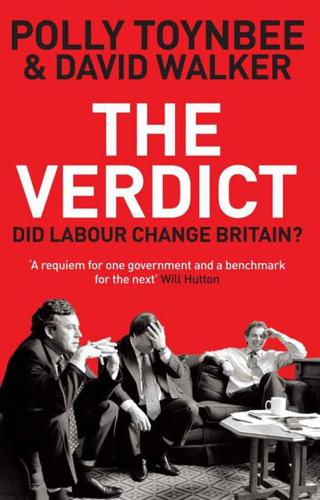
The Verdict: Did Labour Change Britain?
by
Polly Toynbee
and
David Walker
Published 6 Oct 2011
The geopolitics of carbon shifted east and the EU became sensitive to its dependency after Russia started using its gas and oil as a diplomatic tool: why manoeuvre tanks when you can turn off the taps? By 2015 the UK would depend on imports of gas for 75 per cent of supply, and the regulator Ofgem said the UK gas market faced a cliff edge in 2015. To secure supply and cut carbon, Ofgem said the UK should invest £200 billion by 2020 in smart meters, transmission, renewable heating, wind and nuclear. The challenge was ideological as much as practical because cutting carbon meant more state action. Liberalized gas markets simply did not give firms enough incentive to invest – even the CBI agreed with that. Of course the UK still sat on top of millions of tonnes of potentially usable carbon.
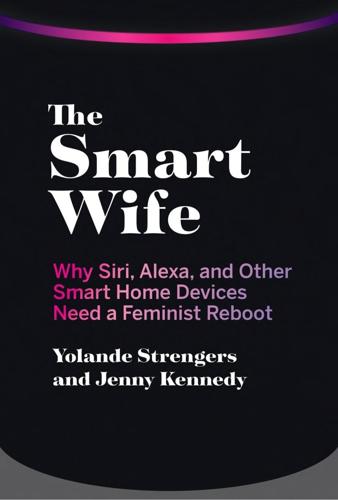
The Smart Wife: Why Siri, Alexa, and Other Smart Home Devices Need a Feminist Reboot
by
Yolande Strengers
and
Jenny Kennedy
Published 14 Apr 2020
Global e-Sustainability Initiative and Accenture Strategy, #SMARTer2030: ICT Solutions for 21st Century Challenges (Brussels: Global e-Sustainability Initiative, 2015), http://smarter2030.gesi.org/downloads/Full_report.pdf. 56. Yolande Strengers, “Bridging the Divide between Resource Management and Everyday Life: Smart Metering, Comfort and Cleanliness” (PhD diss., RMIT University, 2010). 57. Yolande Strengers, Larissa Nicholls, and Cecily Maller, “Curious Energy Consumers: Humans and Nonhumans in Assemblages of Household Practice,” Journal of Consumer Culture 16, no. 3 (November 2016): 761–780; Larissa Nicholls and Yolande Strengers, “Peak Demand and the ‘Family Peak’ Period in Australia: Understanding Practice (In)flexibility in Households with Children,” Energy Research and Social Science 9 (September 2015): 116–124. 58.

Doughnut Economics: Seven Ways to Think Like a 21st-Century Economist
by
Kate Raworth
Published 22 Mar 2017
And since that record is stored on every computer in the network, it acts as a public ledger that cannot be altered, corrupted or deleted, making it a highly secure digital backbone for the future of e-commerce and transparent governance. One fast-rising digital currency that uses blockchain technology is Ethereum, which, among its many possible applications, is enabling electricity microgrids to set up peer-to-peer trading in renewable energy. These microgrids allow every nearby home, office or institution with a smart meter, Internet connection, and solar panel on its roof to hook in and sell or buy surplus electrons as they are generated, all automatically recorded in units of the digital currency. Such decentralised networks – ranging from a neighbourhood block to a whole city – build community resilience against blackouts and cut long-distance energy transmission losses at the same time.
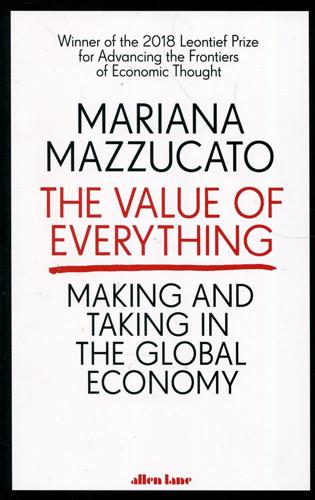
Value of Everything: An Antidote to Chaos The
by
Mariana Mazzucato
Published 25 Apr 2018
It should be clear that many people - not just company employees - have contributed to their competitive advantage. How we govern technology affects who shares in the benefits. The digital revolution requires participatory democracy, keeping the citizen, not big business or big government, at the centre of technological change. Take smart meters, for example; Morozov argues that if they are closed boxes transferring information, ‘what we are doing is essentially introducing more and more closed systems which simply seek to capture rent from infrastructure that has been funded by us, without letting us the citizens take advantage of the same infrastructure for our own purposes and our own monitoring of the government, whether it is the city, or the national government'.7 With this in mind, we can move beyond the idea of public goods as ‘corrections', that is being limited to areas that need fixing (due to positive externalities that they generate), to being ‘objectives'.

The Ransomware Hunting Team: A Band of Misfits' Improbable Crusade to Save the World From Cybercrime
by
Renee Dudley
and
Daniel Golden
Published 24 Oct 2022
But the city lacked the staff to enter all of them manually into a database so that people could pay them. The city halted its scofflaw program, which booted cars with multiple unpaid citations, and made sure that people who had been unable to pay their tickets didn’t face late fees or have their licenses suspended. Water billing had also gone digital. In 2016, the city installed smart meters in homes to record water consumption. Now more than a hundred servers with water billing records were useless, and DPW couldn’t process the data or generate monthly bills. All it could do was urge residents to put money aside or come to the office and pay as much money as they wanted credited to their accounts.
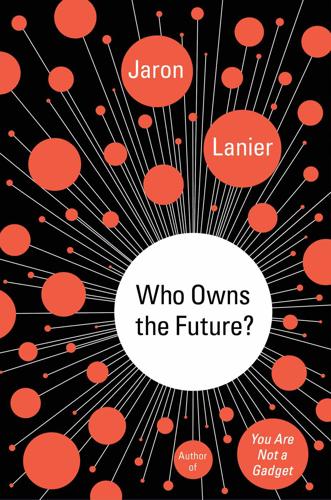
Who Owns the Future?
by
Jaron Lanier
Published 6 May 2013
1. http://www.slate.com/articles/technology/technology/2012/05/facebook_ipo_has_social_networking_supplanted_real_innovation_in_silicon_valley_.html. Chapter 26. Financial Identity 1. See Tim Wu’s book The Master Switch (New York: Knopf, 2010). Chapter 28. The Interface to Reality 1. http://www.firstround.com/our_focus/. 2. http://www.naturalnews.com/036476_smart_meters_hacking_privacy.html. Chapter 29. Creepy 1. See http://www.fellowgeek.com/a-US-security-firm-hacked-by-Anonymous-ix1113.html and http://www.esecurityplanet.com/hackers/panda-security-hacked-lulzsec-is-your-website-safe.html. 2. http://cs-www.cs.yale.edu/homes/freeman/lifestreams.html. 3. See http://totalrecallbook.com/.
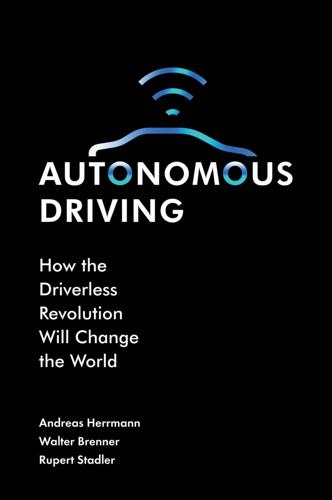
Autonomous Driving: How the Driverless Revolution Will Change the World
by
Andreas Herrmann
,
Walter Brenner
and
Rupert Stadler
Published 25 Mar 2018
Therefore, at least three service classes are defined for 5G: (1) Conventional broadband applications, also termed enhanced mobile broadband (eMBB), e.g. for video streaming and downloading map material. (2) Time-critical, reliable applications, e.g. for automated and autonomous driving. (3) Sensor applications with an extremely high number of devices and very low electricity consumption, e.g. smart metering. In Europe, some carmakers, telecommunications companies and network operators have already jointly formulated their requirements for 5G technology, which will successively flow into the standardisation committees. The 5G standardisation started in 2016 and is to be completed by 2019. The main challenge consists of creating a shared interface between the car platform and the 5G network.
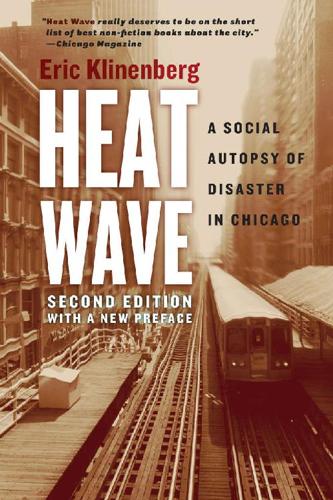
Heat Wave: A Social Autopsy of Disaster in Chicago
by
Eric Klinenberg
Published 11 Jul 2002
“The situational awareness of the system might allow operators to reconfigure the system, either before or after the event, to maintain service,” Leonardo Dueñas-Osorio, an engineering professor at Rice University who is developing resilience metrics for critical infrastructure systems, told me. “As a hurricane approaches, operators could ‘island’ areas that look like they will get the most damage. This breaks the system into small clusters and prevents cascading failures. It gives the operators more control, more capacity to keep the power going or get it back.” Smart meters also enable consumers to go online anytime to learn when and how they use energy and how much they’re spending. Already there’s evidence that customers with this information are adjusting their behavior accordingly: easing off on air conditioning, drying their clothes at night. But reducing individual demand through such neoliberal programming will only go so far.

CTOs at Work
by
Scott Donaldson
,
Stanley Siegel
and
Gary Donaldson
Published 13 Jan 2012
Those can be all consuming and we've got a company to run. We have a tremendous amount of interaction with customers and the technologists within the customer base. That's where most of our new product ideas come from. S. Donaldson: What are examples of some of the partners that you deal with? Tolnar: Examples would be smart metering companies, they're in our space, but in an adjacent space. Other partners could include Siemens, SAIC, and Schneider Electric. They're in adjacent space with very little overlap. What we always try to do is make a build-buy-partner decision. If we've got a sustainable differentiation in intellectual property, we will typically build.
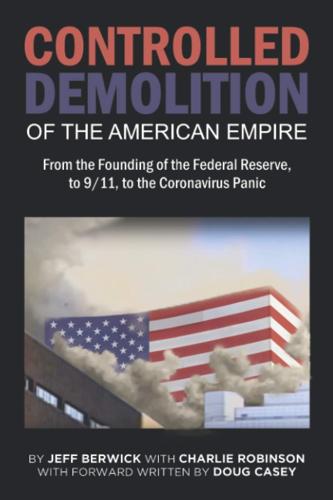
The Controlled Demolition of the American Empire
by
Jeff Berwick
and
Charlie Robinson
Published 14 Apr 2020
Vaccines are filling kids up with all sorts of toxins plus aborted fetal tissue.38 Glyphosate is killing farmers in a way that asbestos could only dream of, but that information is being actively suppressed from the public by Monsanto.39 Cell phones are probably going to end up sterilizing an entire generation of men from being kept in their front pockets. 5G is going to cook people from the inside like microwave popcorn, and smart meters are filling people with electromagnetic pollution.40 There is little doubt that future generations will shake their heads in dismay when they look back at this generation’s willingness to be used as guinea pigs the same way this generation looks at the old cigarette ads showing four out of five doctors recommending Lucky Strikes to their patients.
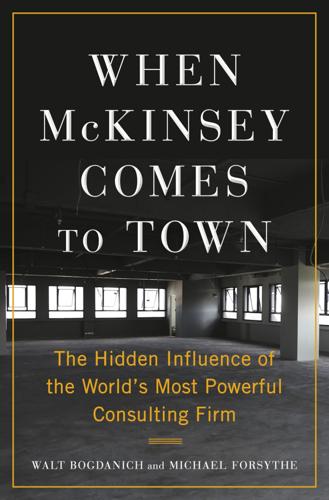
When McKinsey Comes to Town: The Hidden Influence of the World's Most Powerful Consulting Firm
by
Walt Bogdanich
and
Michael Forsythe
Published 3 Oct 2022
In his talk, Chen drew comparisons between the military and business, and his slide deck showed a picture of a soldier holding a rifle. Another controversial project that McKinsey pushed in China focused on “smart cities.” The idea of smart cities is to make urban areas more livable by using networked cameras to better manage traffic, or to reduce water and electricity use through “smart” meters that can send information back to a central location. McKinsey promoted this idea around the world. McKinsey took part in a 2018 smart cities conference in southern China alongside a government commission that descended from the Mao-era state planning bureaucracy. In 2019 the senior partner Sha Sha, one of the firm’s first local hires, spoke at the China Smart City Expo.
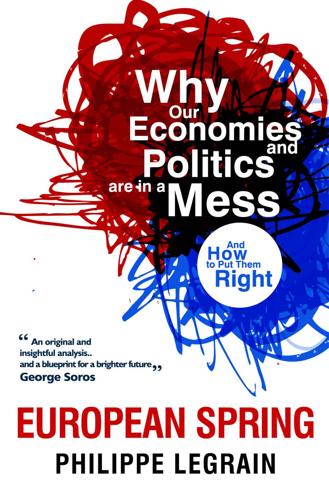
European Spring: Why Our Economies and Politics Are in a Mess - and How to Put Them Right
by
Philippe Legrain
Published 22 Apr 2014
Smart electricity meters in your home could turn the washing machine off and the heating down at peak times when prices are high and also allow you to sell surplus electricity to the grid from solar panels or a wind turbine on your roof. A global pioneer is Italy’s Enel, the state-owned energy utility, which has deployed more than 30 million smart meters to its customers since 2001.552 The internet is also making it easier to connect people who want to rent out rooms, cars and all sorts of other things with those who want to borrow them – a new sharing economy that offers huge potential for growth. Airbnb, a company based in San Francisco, allows people to rent out accommodation for the night; by the end of 2013 ten million people had used its services, many of them in Europe.553 It now has several European rivals: Wimdu and 9flats, both based in Berlin, and London-based onefinestay, which also offers upmarket services.

Adventures in the Anthropocene: A Journey to the Heart of the Planet We Made
by
Gaia Vince
Published 19 Oct 2014
Other cities are using intelligent sensors for regulating utilities, designing flood-defence systems, regulating traffic lights and flow, reducing emergency vehicle response times, speeding baggage flows through airports, locating parking spaces for drivers, optimising waste management, reducing peak-load demand on electric grids and even cutting crime rates. Masdar, a new city being built in the desert of Abu Dhabi, has many of these elements designed into it from the start. The entire city is on a raised platform so that the smart-metered services – from waste to water – can be monitored and accessed from underneath. Masdar plans to be carbon neutral and is powered by an enormous solar station and wind farms, with buildings that incorporate smart shading, solar panels and architecture to maximise cooling breezes. The city, which aims to be completed by 2020, is car-free with above- and below-ground driverless electric transport pods that operate like a personal rapid transit system.

Good Economics for Hard Times: Better Answers to Our Biggest Problems
by
Abhijit V. Banerjee
and
Esther Duflo
Published 12 Nov 2019
The reason could be that he does not know about LEDs, or that he forgets to buy them when he goes to the shop, or that he cannot make up his mind about just how much a premium he is willing to pay for the LEDs because he has a hard time putting a number on how much he really cares about preventing climate change. Would such a person be better or worse off if the government banned non-LED bulbs? Or if bans seem too extreme, the government could “nudge” people gently toward choices that are better for the environment. For example, smart meters now afford the possibility of charging higher prices for electricity during peak hours, compensated by lower prices the rest of the time; this would be better for the environment. A recent study in Sacramento, California, found that only 20 percent of users actively chose such plans when they were made available.23 And yet when a plan like this was made the default for (randomly chosen) users who then had the option of switching back to the traditional plan, 90 percent of them stayed on it, and those who stayed indeed used less energy.

Mastering Blockchain, Second Edition
by
Imran Bashir
Published 28 Mar 2018
Moreover, advancements in technology such as the availability of IPv6, smaller and powerful processors, and better internet access have also played a vital role in the popularity of IoT. The benefits of IoT range from cost saving to enabling businesses to make vital decisions and thus improve performance based on the data provided by the IoT devices. Even in domestic usage IoT equipped home appliances can provide valuable data for cost saving. For example, smart meters for energy monitoring can provide valuable information on how the energy is being used and can convey that back to the service provider. Raw data from millions of things (IoT devices) is analyzed and provides meaningful insights that help in making timely and efficient business decisions. The usual IoT model is based on a centralized paradigm where IoT devices usually connect to a cloud infrastructure or central servers to report and process the relevant data back.
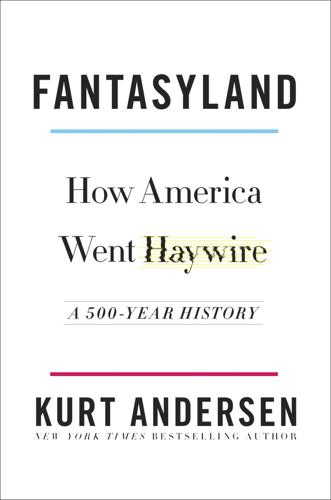
Fantasyland: How America Went Haywire: A 500-Year History
by
Kurt Andersen
Published 4 Sep 2017
And when the stories the right tells aren’t fantastical enough, Jones goes all the way: he doesn’t just oppose firearms regulation, he has been a Sandy Hook truther, insisting two years after the massacre that it was “a synthetic completely fake [event] with actors.” The evil lurks everywhere. Life is a horror movie. “What’s coming to take over,” he says, “is your smart car taxing you by the mile, what’s coming to get you is the smart meter frying you in your house, what’s coming to get you is fluoride in the water, what’s coming to get you is cancer viruses in the vaccines, what’s coming to get us is the soft-kill New World Order.” The advertising on Jones’s various media platforms illustrates the overlaps among regions of make-believe.

Fantasyland
by
Kurt Andersen
Published 5 Sep 2017
And when the stories the right tells aren’t fantastical enough, Jones goes all the way: he doesn’t just oppose firearms regulation, he has been a Sandy Hook truther, insisting two years after the massacre that it was “a synthetic completely fake [event] with actors.” The evil lurks everywhere. Life is a horror movie. “What’s coming to take over,” he says, “is your smart car taxing you by the mile, what’s coming to get you is the smart meter frying you in your house, what’s coming to get you is fluoride in the water, what’s coming to get you is cancer viruses in the vaccines, what’s coming to get us is the soft-kill New World Order.” The advertising on Jones’s various media platforms illustrates the overlaps among regions of make-believe.

Four Battlegrounds
by
Paul Scharre
Published 18 Jan 2023
There are an estimated 24 billion connected devices in use in 2021, growing 10 percent annually to an estimated nearly 30 billion devices by 2023. As the internet expands, it is bringing both more people and devices online. By 2023, there will be an estimated 5.3 billion internet users, or two-thirds of the world’s population. IoT devices, which include smart meters, medical devices, home appliances, and industrial applications, are growing even faster than users and by 2023 are expected to account for over half of all connected devices. These devices create data and share it across a global network that trafficked an estimated over 250 exabytes of data per month in 2020.

Engineering Security
by
Peter Gutmann
Trying to explain that the target platform has 15% of an ARM7 TDMI and 18K RAM available and that no operation can tie up the CPU for more than 2ms before it’s killed by the system watchdog won’t have much effect. This became particularly problematic when smart meters started to become widespread and regulators imposed requirements for certificate-based signed messaging and updates onto CPUs like TI MSP430s, Motorola ColdFires, and ARM Cortex-Ms, some clocked as high as 16MHz and with as much as 32kB of RAM (for everything, not just the crypto). The solution with smart meters was to cut corners as much as possible in order to make things fit, skipping certificate verification, assuming hardcoded public keys, and various other measures that are destined to become entertaining Black Hat or Defcon presentations in the future.

The Empathic Civilization: The Race to Global Consciousness in a World in Crisis
by
Jeremy Rifkin
Published 31 Dec 2009
The smart intergrid is made up of three critical components. Mini-grids allow homeowners, small- and medium-size enterprises (SMEs), and large-scale economic enterprises to produce renewable energy locally—through solar cells, wind power, small hydropower, animal and agricultural waste, and garbage—and use it off-grid for their own electricity needs. Smart metering technology allows local producers to more effectively sell their energy back to the main power grid, as well as accept electricity from the grid, making the flow of electricity bidirectional. The next phase in smart grid technology is embedding sensing devices and chips throughout the grid system, connecting every electrical appliance.

Private Empire: ExxonMobil and American Power
by
Steve Coll
Published 30 Apr 2012
Obama and his advisers decided that day to design the stimulus to make a down payment on their major domestic priorities—particularly clean energy. Franklin Roosevelt’s stimulus during the Depression years had built national park facilities; Obama’s bill, they concluded, should launch a new era of investment in solar energy, wind power, other clean energy technology, “smart” meters to regulate home electricity use more efficiently, upgrades to the national electric grid transmission system, home weatherization, and energy efficiency programs. These expenditures ultimately would total $80 billion. The renewable energy advocates around Obama recognized, however, that the long-term economic viability of solar and wind power would depend on whether dirtier, cheaper sources of energy such as oil and coal would be taxed—directly or through cap and trade.